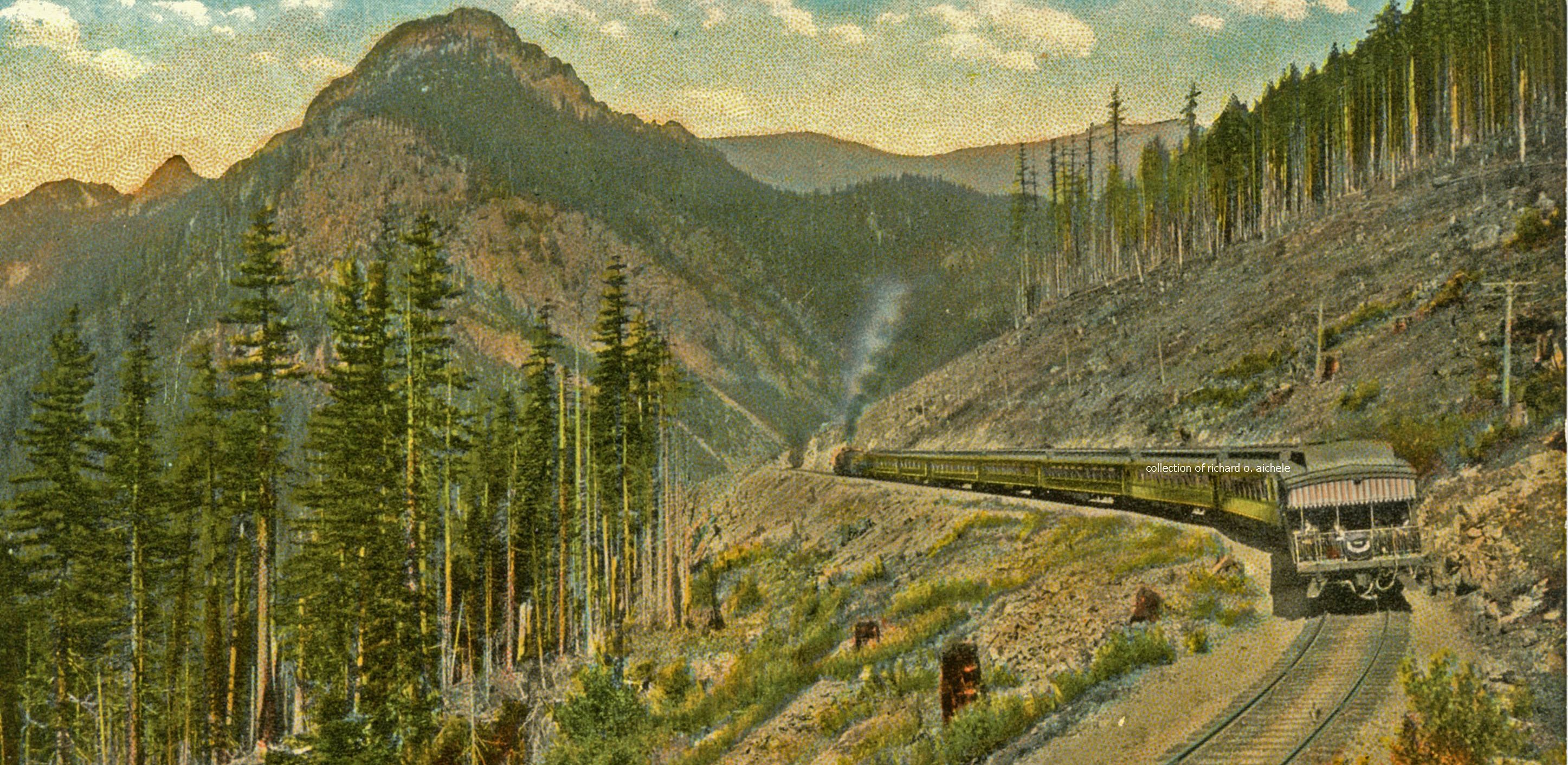Copyright 2021 by Richard O. Aichele - email rottoa@gmail.com - and InforWorks.com Inc. |
America's railroad passenger travel in the 20th Century created grand terminals such as Cincinnati Union Station, New York's Grand Central Terminal and Kansas City Union Station. The Pullman Company set the standard of excellent sleeping car service. The Santa Fe, New York Central, Pennsylvania, Southern Pacific were just a few of the railroads that carried millions of people. |
The Daily Race
Two of America's largest eastern railroads competed every day for the overnight passengers travelling between Chicago and New York City. Their routes were about 950 miles long but were parallel to each other for only a few miles between Englewood ,Illinois and Gary, Indiana. It took only minutes for the New York Central Railroad's 20th Century Limited and the Pennsylvania Railroad's Broadway Limited to travel those few miles but The Race was a daily event that of that era demonstrating corporate technical and operational competition to attract the public travelers. Both were First Class all-Pullman car trains that operated daily in both directions between New York City and Chicago. The trains departed from Chicago for New York at the same mid-afternoon time with the 20th Century Limited from Chicago's LaSalle Street Station and the Broadway Limited from Chicago's Union Station. Over the years, The Daily Race was the opportunity to witness the evolutions of the latest steam locomotive and then diesel locomotive technologies combined with industrial era Art Deco artistic designs. At Engelwood, the two railroad's mainlines converged and The Daily Race was a subject for photographers and artists for decades.
Travel In Style - Travel Pullman
Once, thousands of people went to bed every night between crisp white sheets and under the woolen Pullman blankets in railroad Sleeping Cars tavelling all over the country. Many of the sleeping cars were operated by the Pullman Company. It was an era where service and comfort mattered. Every passengers' shoes aboard Pullman sleeping cars were shined overnight while their owners slept. The Pullman Company's policy of personal courtesy and considerate attention to the passengers was carried out efficiently by the thousands of Pullman Porters. And aboard the trains, fine dining and congenial lounges were also standard fare. In most recent years, travel has become faster -- although probably not finer.
|
|
The Era of Streamliners + Dome Cars = Great Travel
|
|
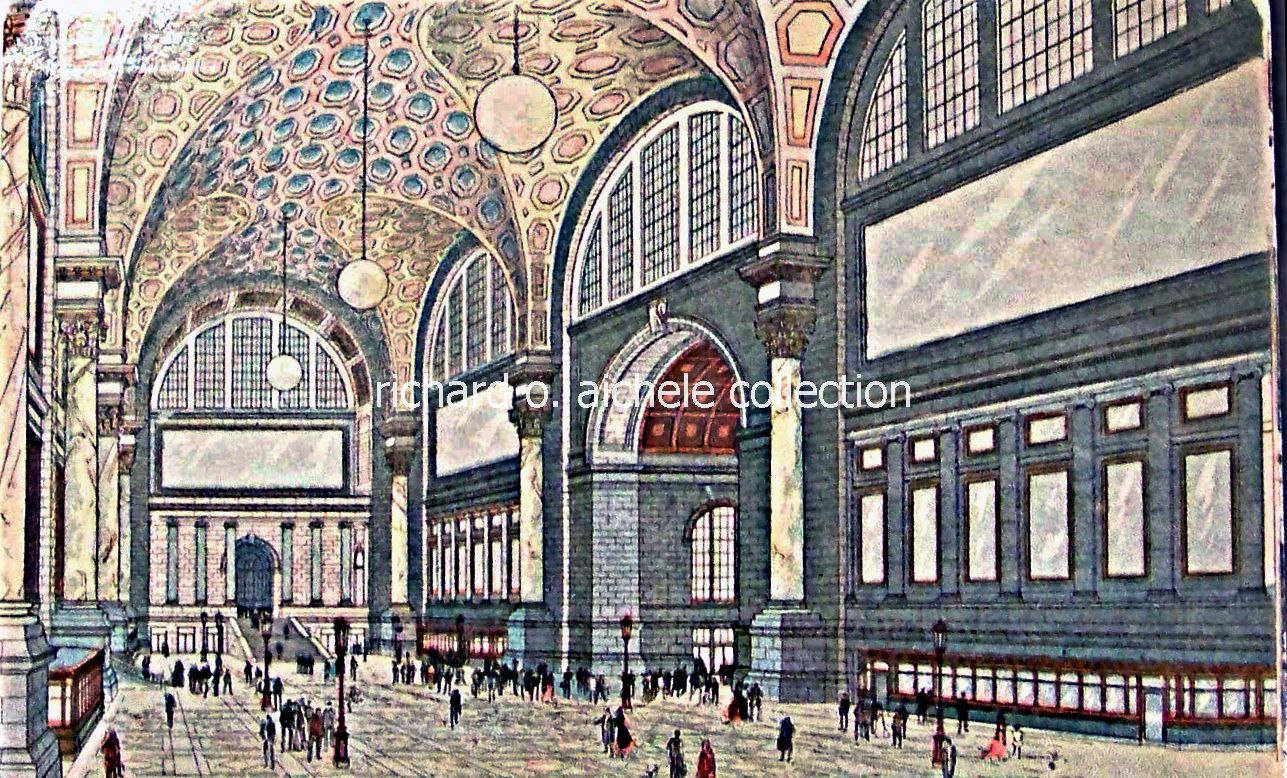 |
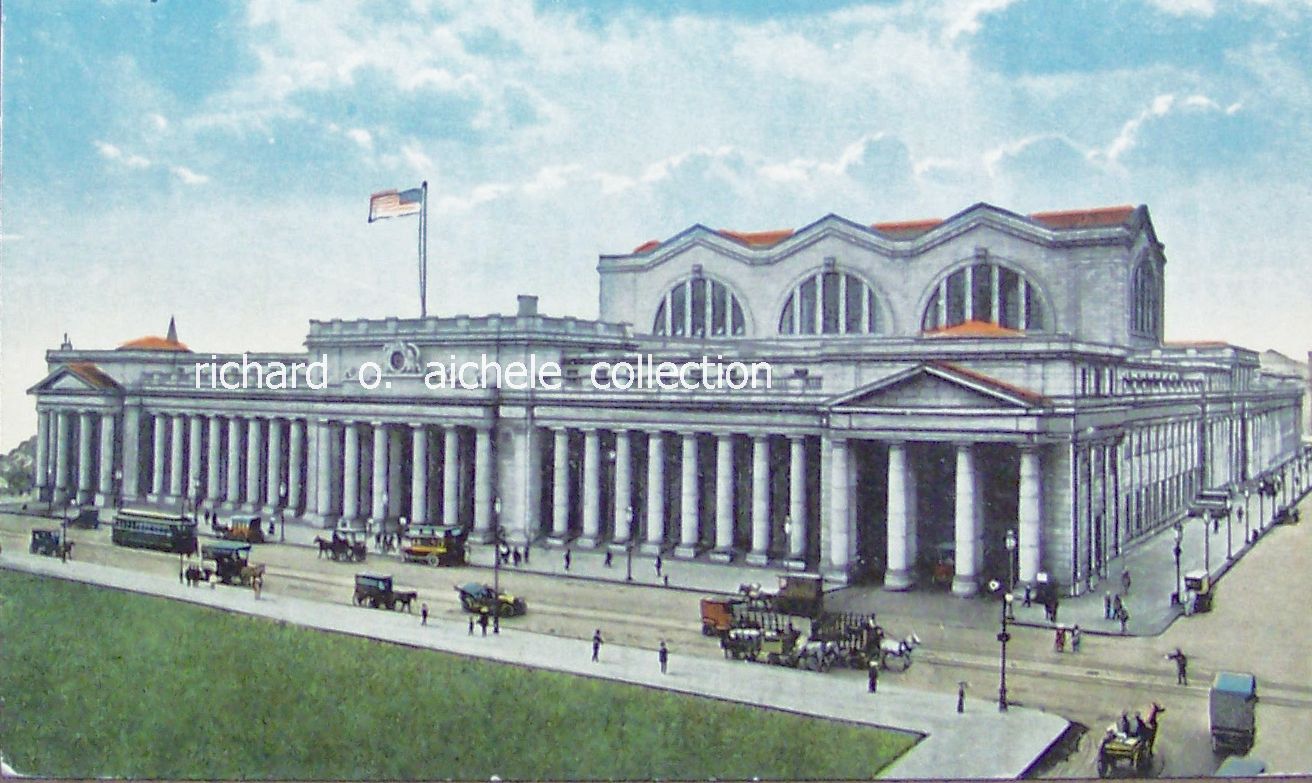 |
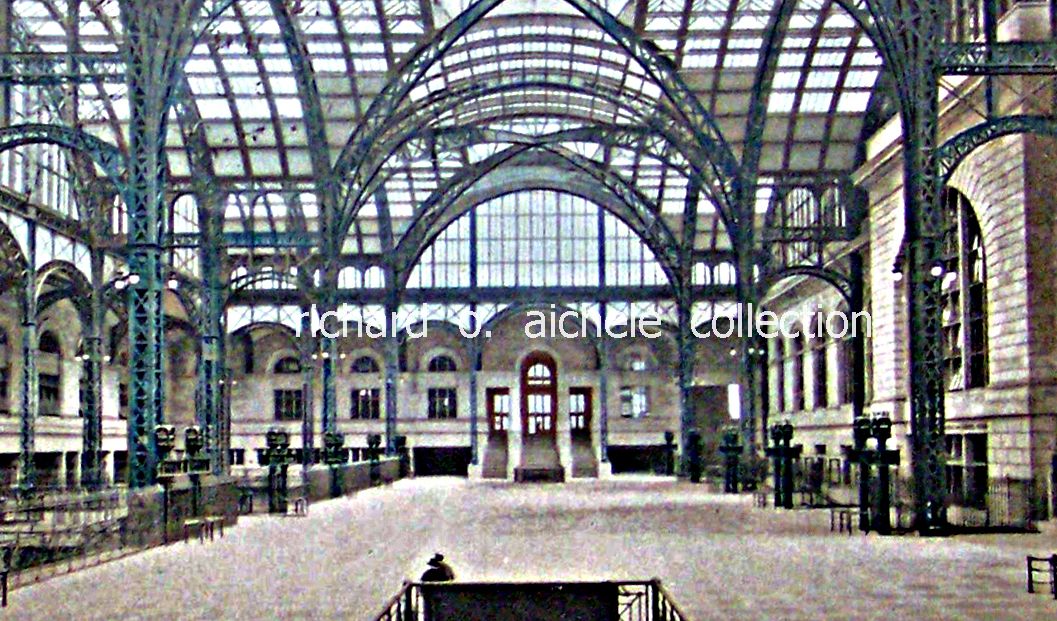 |
Amtrak's Challenge - Reversing Years of Neglect Amtrak was created by the federal government to consolidate the remains of America's once best in the world railroad passenger system. Many of the railroads had allowed their services to decline and discouraged passengers with poor services and increasingly limited number of trains. Compounding those problems, Amtrak was initially underfunded and financial funding has steadily decreased year by year. While other major countries have invested in High Speed Rail systems, Amtrak's ability to enter that market is limited by federal financial cuts and as a result America's infrastructure is left behind.
Many of Amtrak's on-board crews were veterans of the Pullman Company and other first class rail service providers. They still wanted to provide traditional old style 1st class service as they had done for years. But the reality was that at Amtrak's inception it was generally forced to depend on an infrastructure of worn out rolling stock, rundown stations in many regions and insufficient investment capital to make the necessary improvements as quickly as needed.
The equipment and facilities taken over from the western railroads was significantly better than those from eastern railroads. The Union Pacific Railroad's distinctive yellow coaches and sleepers became a common sight on eastern trains such as The Broadway Limited. Stainless steel passenger cars were easier to mix throughout Amtrak's system since their exteriors blended together easily.
This long Amtrak train consisted of 18 passenger cars and baggage cars that were the combination of the El Capitan's forward coach section including lounge and dining cars coupled to the rear first class Super Chief's section ot sleeping cars, dome lounge car and the dining car. |
Private Railroad Cars and Special Trains In the years before Amtrak was formed, individual railroads with passenger service would at times operate private, non-scheduled, passenger trains for special groups and special occasions. As the railroads exited the passenger business, the operation of those private trains declined or disappeared. That market void for special operation private trains was slightly filled for a time as a small number of independent private individuals who purchased and modernized former railroad passenger cars and made them available for tours. Amtrak had recognized a market potential for group travel private trains that, due to equipment shortages, they could not always provide. Amtrak also established a program based on a fee per mile to accommodate individual private cars at the rear of their scheduled passenger trains when possible.
The 1980 Irving Trust Winter Olympic Special Private Train In 1979, as the 1980 Winter Olympics in Lake Placid approaced, a major bank, The Irving Trust Company, in New York City began to explore the winter time safest and most comfortable way to transport their guests between New York City and Lake Placid. Their solution was a private train. This is that story: The goal of the 1980 Winter Olympic Special Train was the operation of five round trips between New York City and Plattsburgh, New York to transport the New York City based bank's important guests from around the world to the Lake Placid Winter Olympic Games. The private1980 Winter Olympic Special Train's operation allowed each of the five groups to spend three days at the Olympics in Lake Placid. Among the operating challenges for the special five private car train included they were pulled over different sections of the route using either Amtrak locomotives and crews or Delaware & Hudson Railway locomotives and crews. The operating crews also included Conrail personel for the Conrail tracks between Schnectady, NY and Albany-Rensealeer, NY. Another challenge was due to the open platform business car at the rear, the train had to be turned at Grand Central Terminal and at Plattsburgh. Grand Central was no problem because of the track loops installed when the terminal was built. Plattsburgh was a bigger challenge. The layover time available between passenger groups to service the cars and turn the train was only four hours. Fortunately, an older Delaware & Hudson yard worker who knew every rail siding in the area suggested a little used Y tracked siding on the U.S. Air Force SAC base. Entry onto the base required strict security procedures but the operating challenge was resolved. The Special's consist was made up of five private cars: a diner / entertainment car, two sleepers for passengers and crew, the Virginia Beach sleeper lounge with 6 double-bedrooms for passengers, and a traditional open platform business car on the rear with bedroom accommodations for the bank's two host couples. The train's passengers boarded at 5 PM, enjoyed cocktails and dinner as the vestabule doors slammed shut the special train rolled smoothly north out of Grand Central Terminal at 7:00 PM for the overnight run northward giving guests a comfortable night's sleep. The returning southbound run was mostly in daylight and evening that provided the oustanding vistas along the Hudson River such as West Point.
Few things in railroading are easy especially operating passenger cars and passenger trains on time in the dead of winter. So at the conclusion of the five round trips of the Olympic's special train, Irving Trust Company's Chairman of the Board wrote to Richard O. Aichele, who organized the project, negotiated with the railroads, located the private cars and supervised the operation of the special train, that: "The "IRVING OLYMPIC LIMITED" not only became a reality but it was the keystone in what turned out to be an unforgettable event in the lives of all of us and of our guests as well. To you goes the major credit...We learned to have some idea of the impossible complications and frustrations of trying to put the train together and of keeping it running smoothly, so we weren't fooled by the apparent ease with which virtually everything went so precisely during the actual trips, but it certainly overwhelmed our guests - and us. . . It not only became a reality but it was a keystone in what turned out to be an unforgetable event in the lives of all of us and our guests as well. For your essential part in it, Dick, our deep thanks again for superb performance." |
Infrastructure Investments Made Railroads Successful |
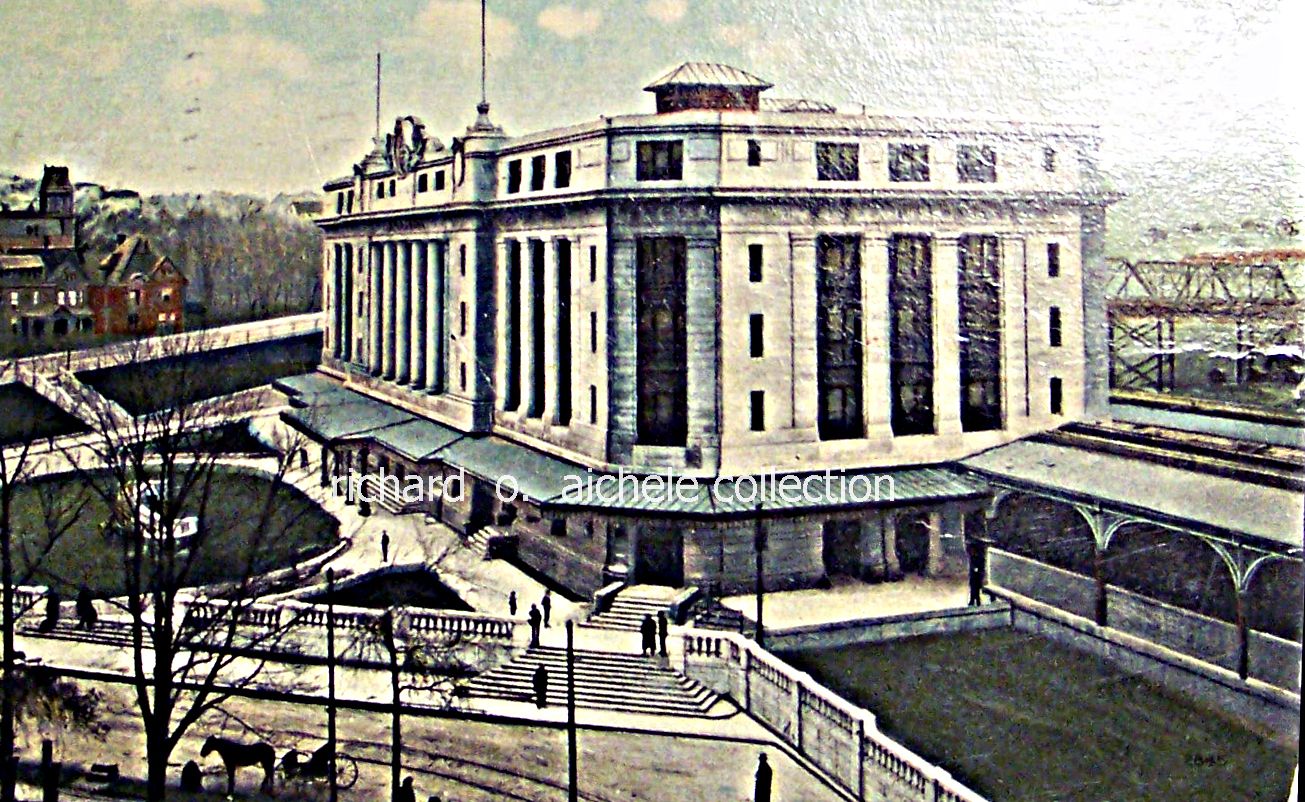 |
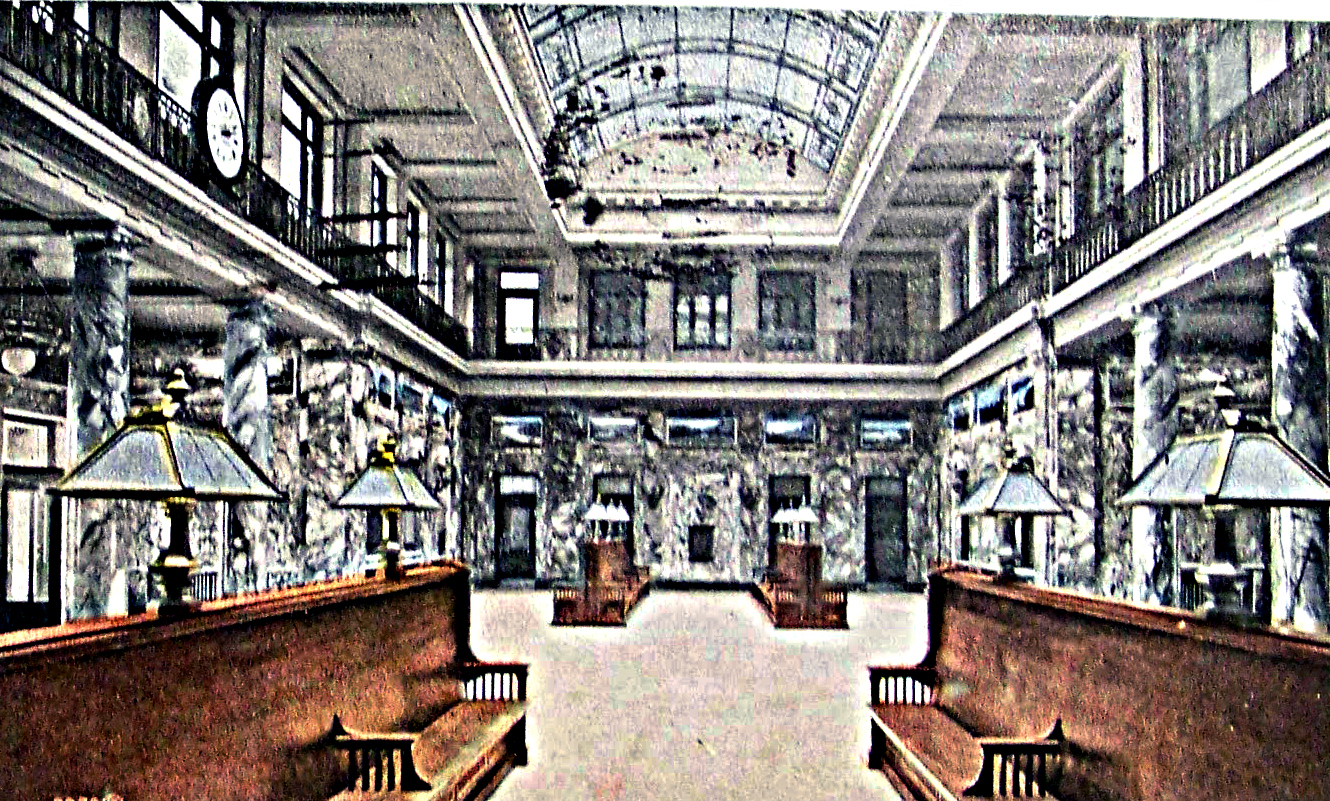 |
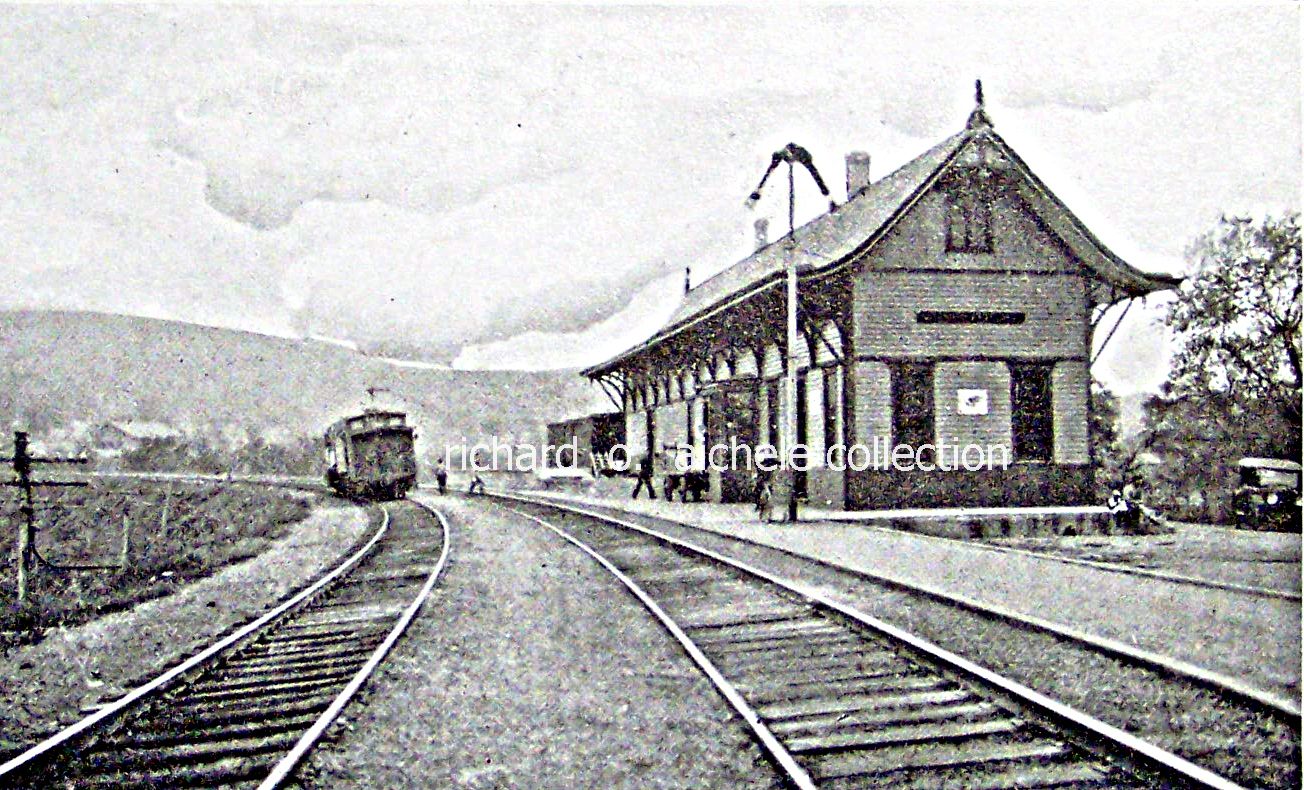 |
The Lackawanna Cut-Off - The Fastest Track Westward Steam passenger trains had an excellent reputation on the Delaware, Lackawanna & Western Railroad. In the early 1900s, the Delaware Lackwanna & Western Railroad became a construction pioneer in the use of re-inforced concrete to build structures such as the Delaware Water Gap river bridge, the nearby Paulinskill Voaduct and further west was the 2,2375 long sprandrell deck arch Tunkhannock Viaduct. They were and still are considered an engineering marvel. Reinforced concrete was also used for tunnels and the train stations and switch towers on the Lackawanna's rail routes. Those structures at the western end of the Lackawanna Cut Off that provided a straight 70 MPH line railroad route with almost no grades or curves across much of western New Jersey to Pennsylvannia at the Delaware Water Gap.
The Delaware, Lackawanna and Western Railroad's premier passenger train Phoebe Snow travelled daily between Hoboken, New Jersey and Buffalo, New York with connections to Chicago. |
The Railroad Steam Era Railroad Steam Locomotives once powered thousands of trains in the United States. The locomotives were impressive almost "living" machines with their never forgotten steam sounds blending with the melodious steam whistle sounds heard for miles. The railroad steam locomotives were called Mikado, Mountain, Berkshire, Northern, Niagara, Hudson or Mogul depending on their mechanical wheel arrangement designs. They came in many sizes and they were all impressive. Their smells of coal smoke, steam and hot oil co-mingled and the sounds of their great steam whistles echoed for miles across the countryside. Whether they pulled fast passenger trains, passenger and frieght locals of only a few cars, or long freight trains, those big impressive steam locomotives created wonderful, never forgotten memories for millions of people. |
Delaware, Lackawanna & Western Steam Power West of the Cut-Off crossing the Delaware River. |
|
New York Central's Steam Powered Passenger Trains The passenger trains of the New York Central Railroad's Water Level Route that included the famous 20th Century Limited. (Below)The New York Central's Lake Shore Limited Boston Section (Train 22) with two locomotives about 1951. The Number 600 was the lead steam locomotive of the double header team for the climb over the Berkshire Mountains in western Massachusetts. The photo shows Train Number 22 at the Austerlitz Street crossing just after leaving the train depot in Chatham, New York on schedule in the late morning heading east for the train's late afternoon arrival in Boston. The Lake Shore Limited had originated in Chicago for the overnight run to Abany, NY where the train split into the New York Section enroute to New York City's Grand Central Terminal and the Boston Section enroute to Boston's South Station. (Photo by Gene Baxter)
|
Delaware & Hudson Railway The Delaware & Hudson Railway's steam locomotive evolution at its high point in 1943 led to the creation a new Northern design designated by Delaware & Hudson as the Class K 4-8-4 and they were built by American Locomotive Company in Schenectady, New York.
As the steam era ended, Delaware & Hudson 302 provided the power for several steam excursions. Photo shows the 302 ready to depart from the Colonie, New York railroad yard. Delaware & Hudson photos by Gene Baxter.
|
Troy, New York - Once A Railroad Crossroad Throughout the country, as the number of larger and smaller railroads incresed competing for the freight and passenger markets the web of railroad tracks expanded. Large cities were well served. Most towns and small cities especially in more rural areas were served by a single railroad Midsize cities became an interchange points for several railroads.
In the northeast, Albany, New York was one example.In the 1800s it became an important river port due to Hudson River and Erie Canal traffic. The railroads then made it their hubs. The architecturally renowned Delaware & Hudson Railroad headquarters and passenger station adjacent to the New York Centra Railroadl's imposing station became important points of commerce. The New York Central Railroad's Albany Station was the first stop for their prime westbound and last stop for the eastbound passenger trains to New York City such as the 20th Century Limited. Across the Hudson River from Albany is Troy, NY which had the generally lesser known but operationally and the architecturally significant Troy Union Station shown soon after opening in the early 1900s. The City of Troy benefited from its topogrpahic location including the Hudson River and its share of river traffic including both passenger steamers to New York City. The Rutland Railroad, Delaware & Hudson Railway and New York Central Railroad provided direct service to Vermont, Maine, Boston, Massachusetts, New York City and Montreal, Quebec, Canada. Soon after opening in 1900, the Troy Union Station's role as a railroad hub quickly developed. New York Central's locomotive 5450 raised a cloud of steam and smoke near Troy's Union Station. Photo taken late 1940s.
Troy, New York State, USA Union Station
|
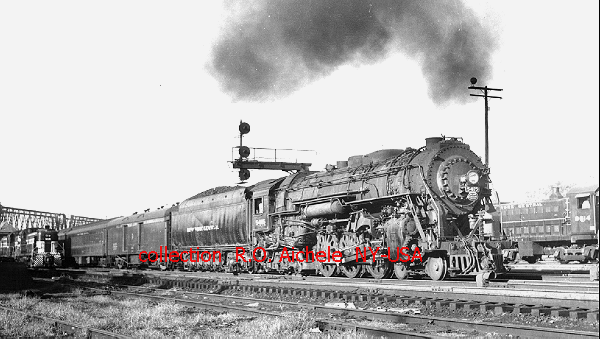 (Photo) After its arrival from Montreal over the Delaware & Hudson Railroad mainline along Lake Champlain and into Troy, the Laurentian's passenger train consist was transferred to the New York Central Railroad. Headed by NYC locomotive 5415, the Laurentian again rolled southbound for Croton-Harmon, NY where the steam locomotive was replaced by an electric engine for the Laurentian's final leg of the trip to the New York Central Railroad's Grand Central Terminal in New York City.
(Photo) After its arrival from Montreal over the Delaware & Hudson Railroad mainline along Lake Champlain and into Troy, the Laurentian's passenger train consist was transferred to the New York Central Railroad. Headed by NYC locomotive 5415, the Laurentian again rolled southbound for Croton-Harmon, NY where the steam locomotive was replaced by an electric engine for the Laurentian's final leg of the trip to the New York Central Railroad's Grand Central Terminal in New York City.
The Ghost Train The new Pullman train between New York and Boston in 1891 quickly became known to railroaders as The Ghost Train because of the creamy white exteriors of its all Pullman car consist. With lettering and other decorative features in gold, the train offered a marked contrast with every other passenger train.
Each train's consist included a combination car, passenger coaches and drawing room cars. The combination car included a baggage compartment and a smoking room provided with upholstered willow chairs, lush carpeting and white shades and draperies on the windows. The drawing room cars were outfitted with 20 revolving chairs and 6 reclining chairs. Car lighting was provided by gas fixtures and each car carried its gas supply in nine foot long cylinder tanks under the car. During night time, and especially during periods of mist or fog, the brightly lit interiors and the white exteriors made the trains appear especially ghostly. Built especially for this service, each Pullman car cost about $8,500 at the time. |
The Railroad's Roundhouse Infrastructure
These photos taken on a winter's night by Gene Baxter about 1950 show the Central Vermont Railroad's steam locomotive number 501 and its tender fully loaded with coal on the turntable prepared for the next day's rail traffic.
|
Fires Out - Boilers Cold - End of the Line |
The end of railroad operated steam locomotives also brought an end to that unique railroad
facility - the Roundhouse.
Delaware, Lackawanna & Western RR Roundhouse Binghamton, NY Years after the last steam locomotives had moved away from the maintenance pits on their last trip to the scrappers, this locomotive roundhouse in Binghamton, New York still stood in 1971 although abandoned and silent. |
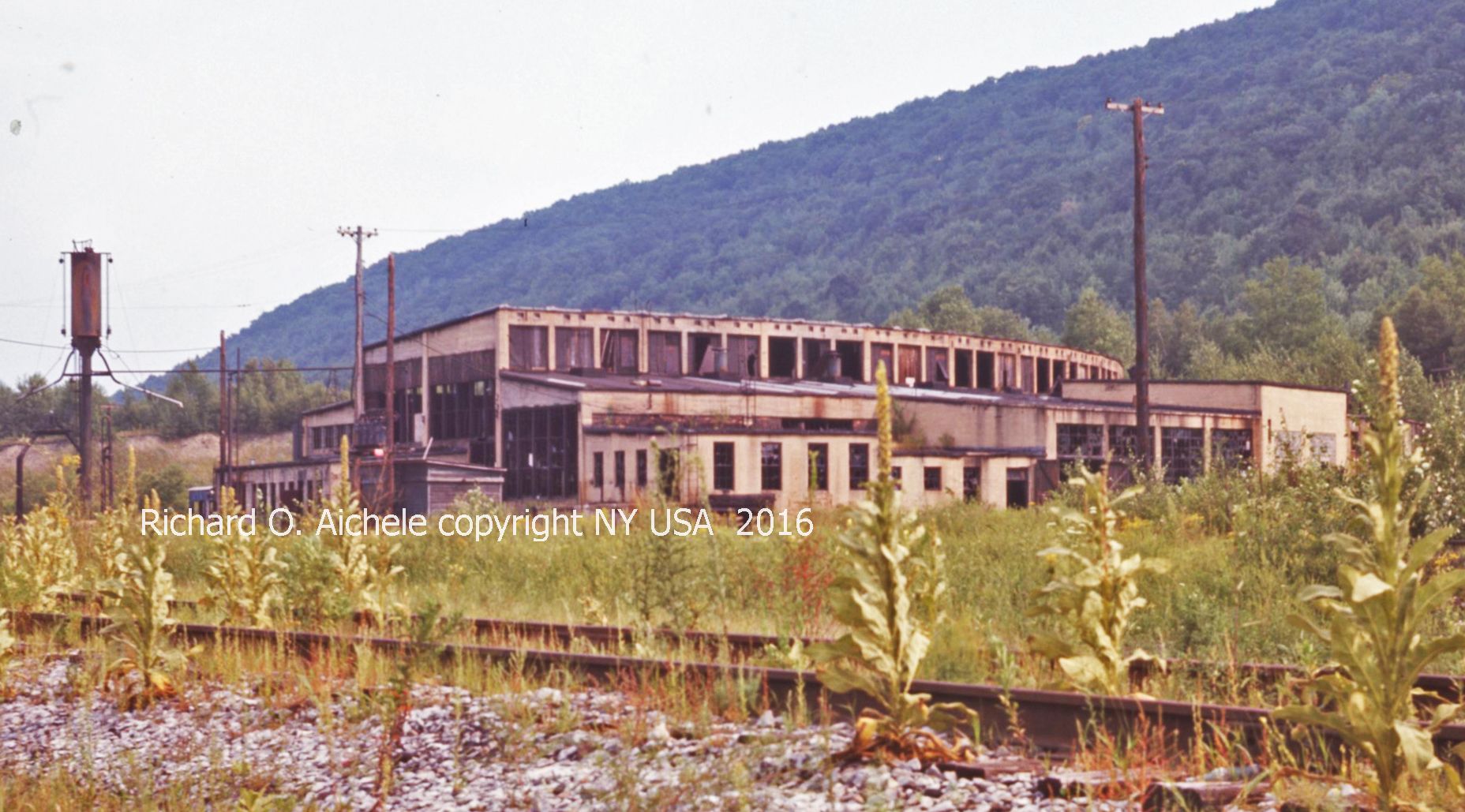 |
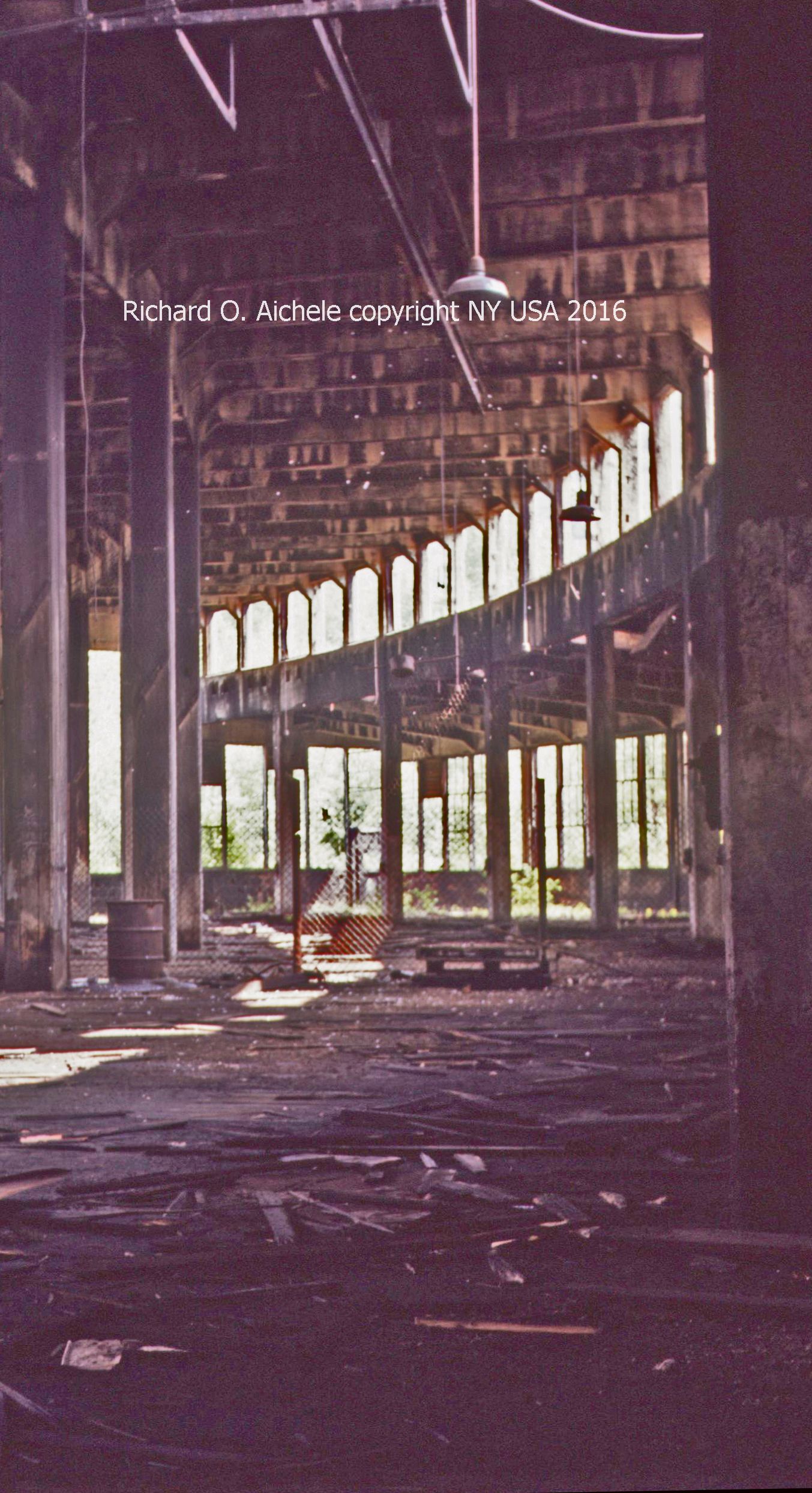 |
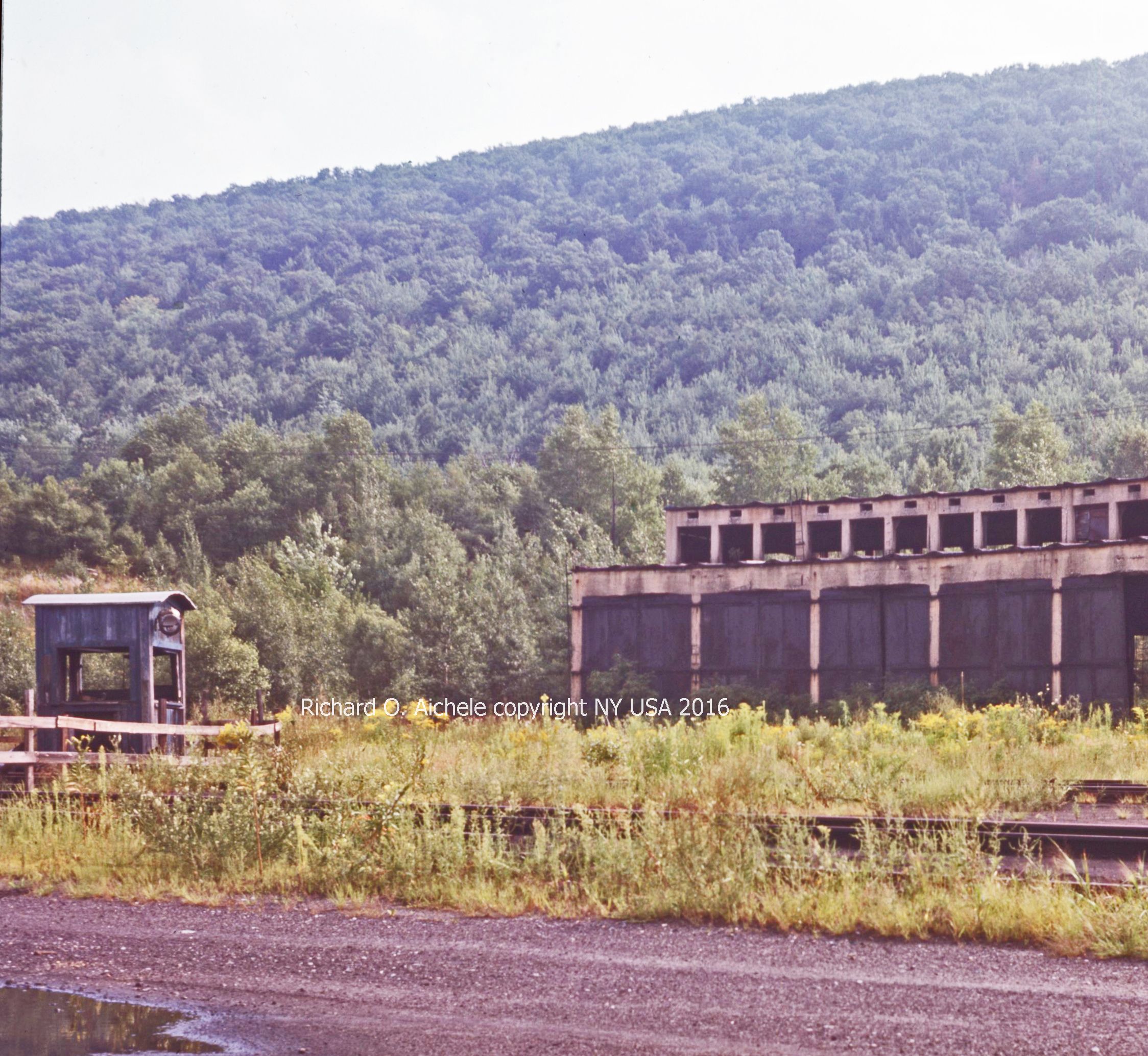 |
Central Railroad of New Jersey's Communipaw Roundhouse The Central Railroad Company of New Jersey operated passenger and freight service in New Jersey and eastern Pennsylvania and cross Hudson River commuter ferries from Jersey City, NJ to Manhattan in New York. Their major operational base for their motive power steam locomotives was at the Communipaw Round House in Jersey City. By the late 1960s, the region's declining rail passenger and freight business and the changeover from steam to diesel motive power saw that faciility closed down. In 1970, when these photos were taken, the hundreds of skilled workers were gone and only a few large pieces of machinery to heavy to carry off remained. |
 |
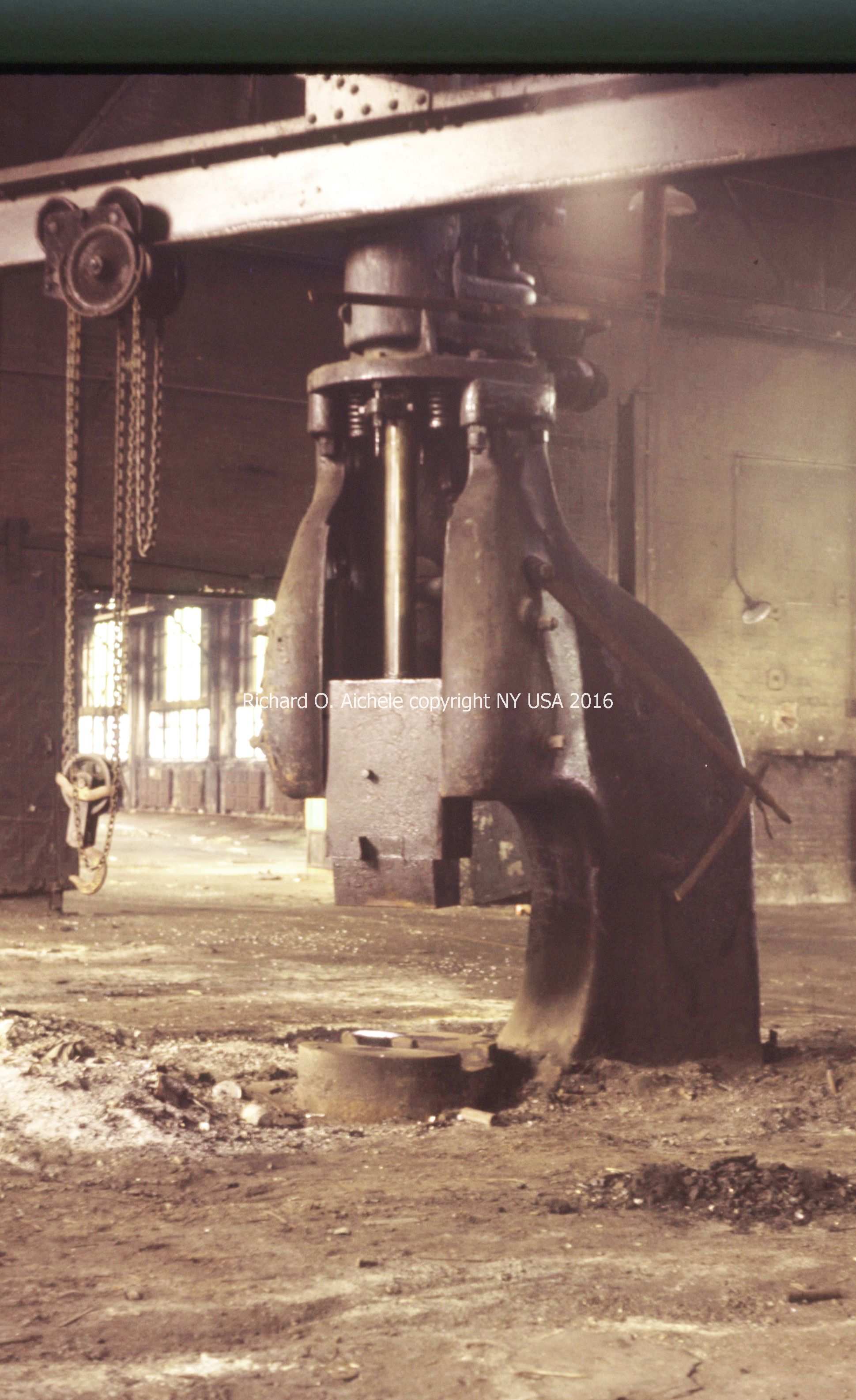 |
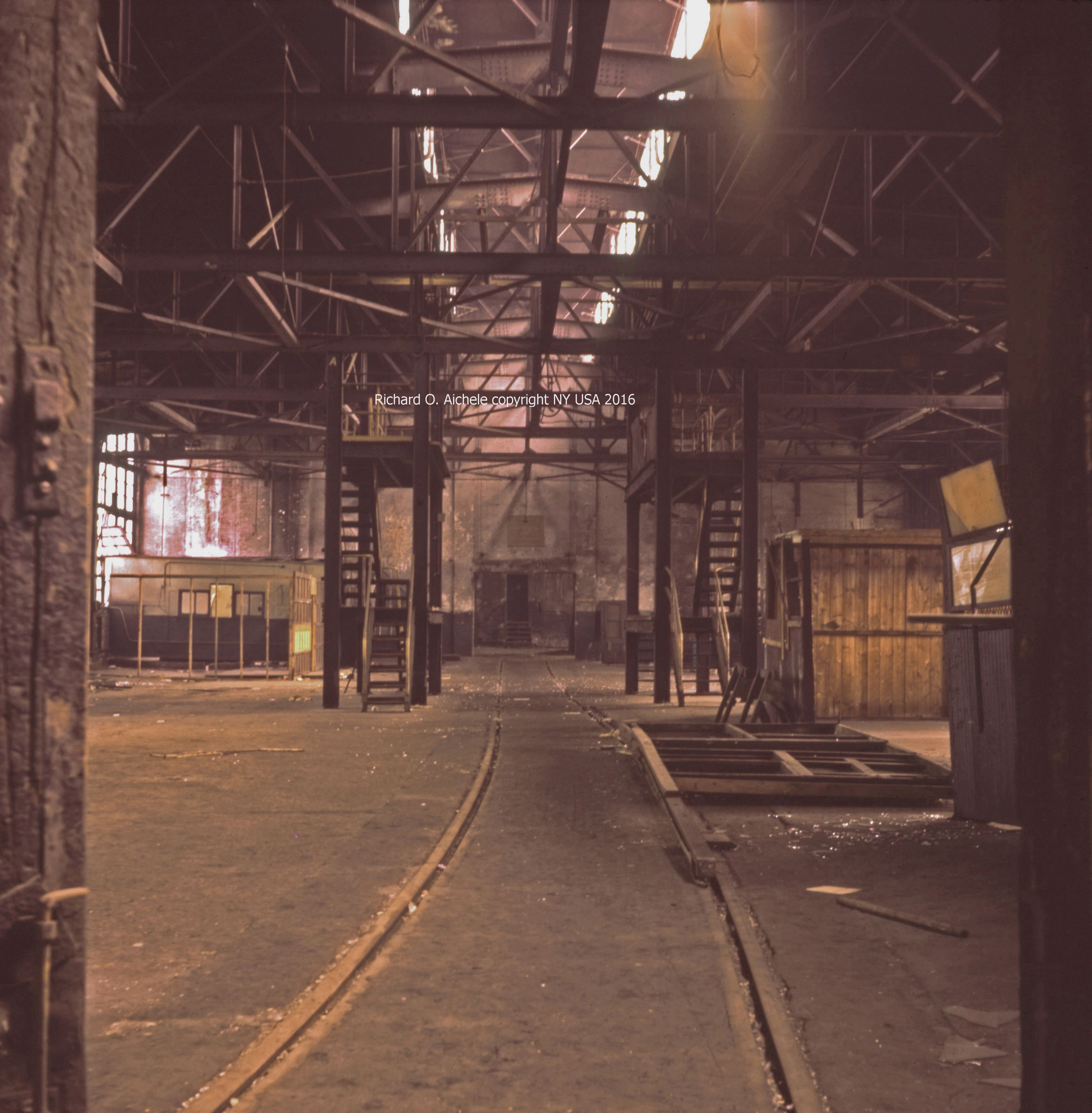 |
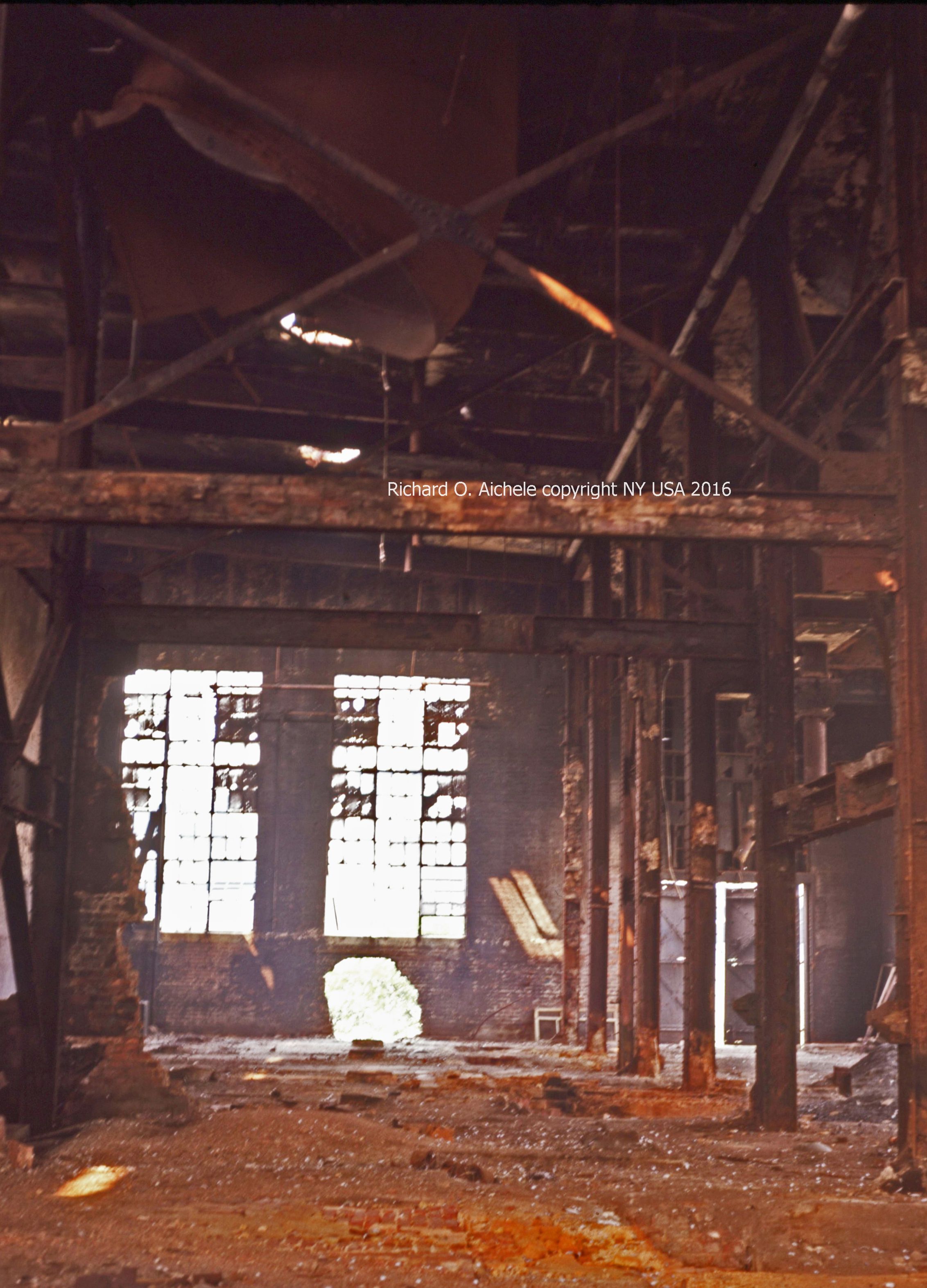 |
Locomotives, Mail Cars, Passenger Cars -- On The Scrap Line After Years of Service |
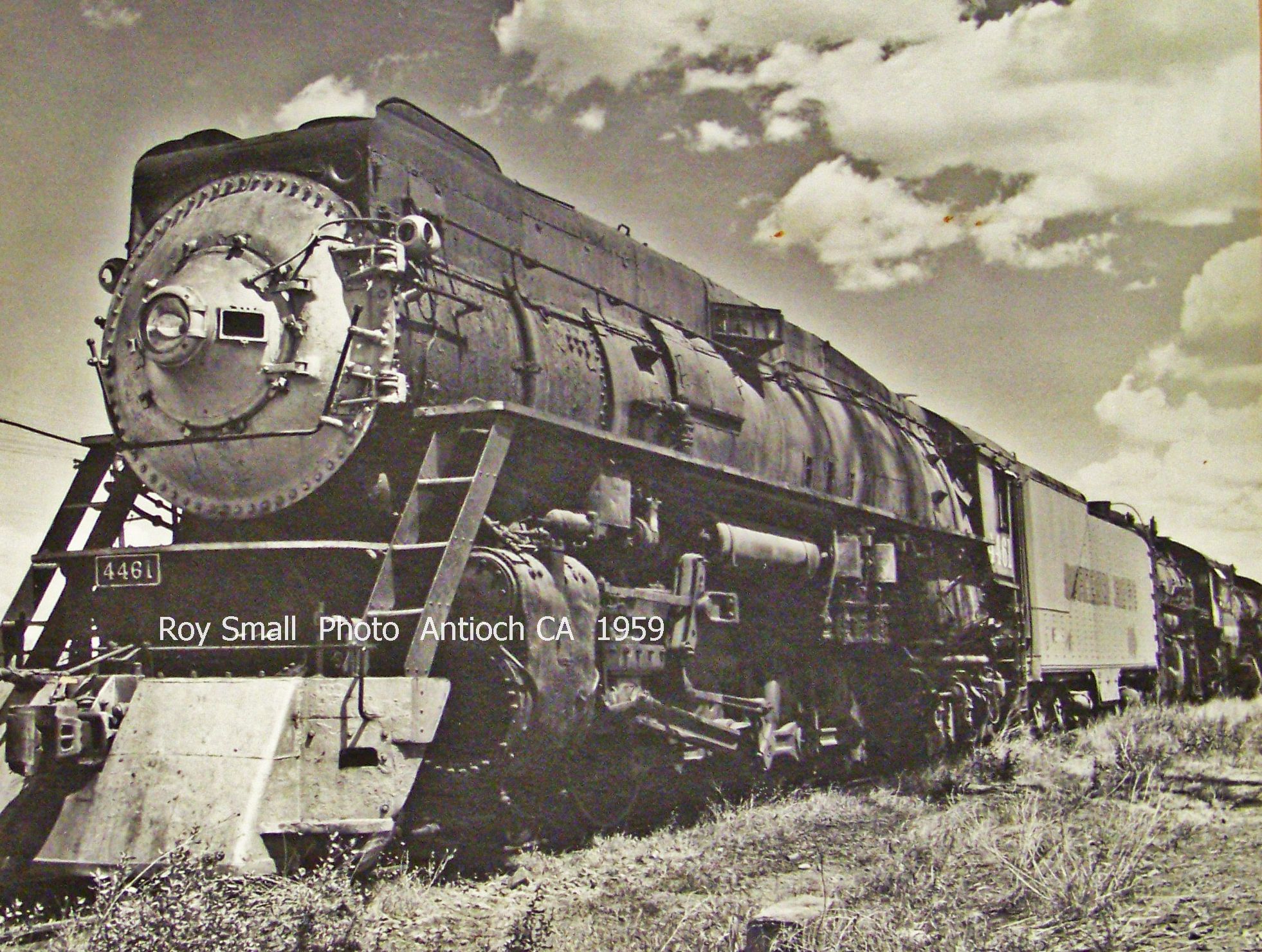 |
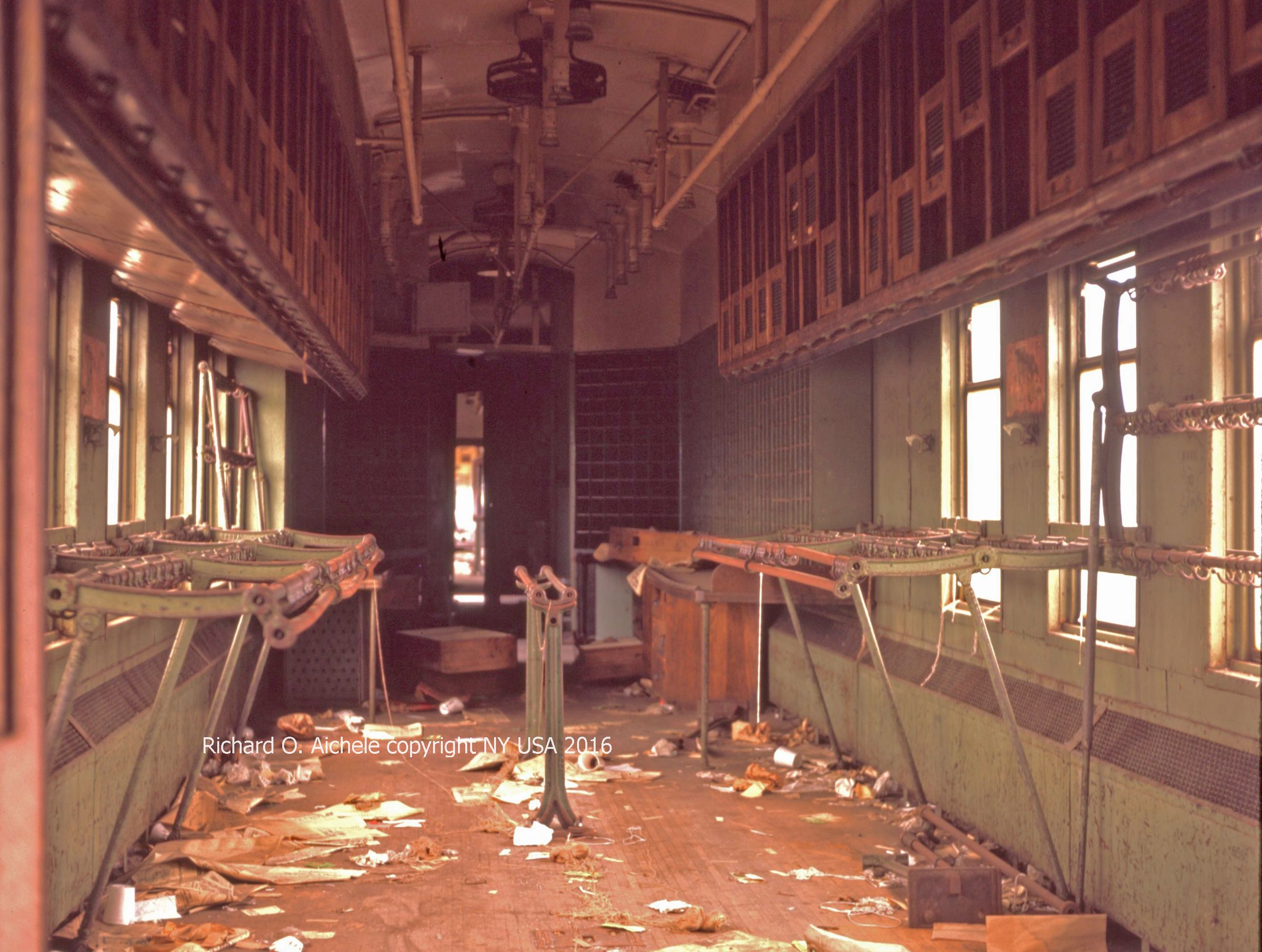 |
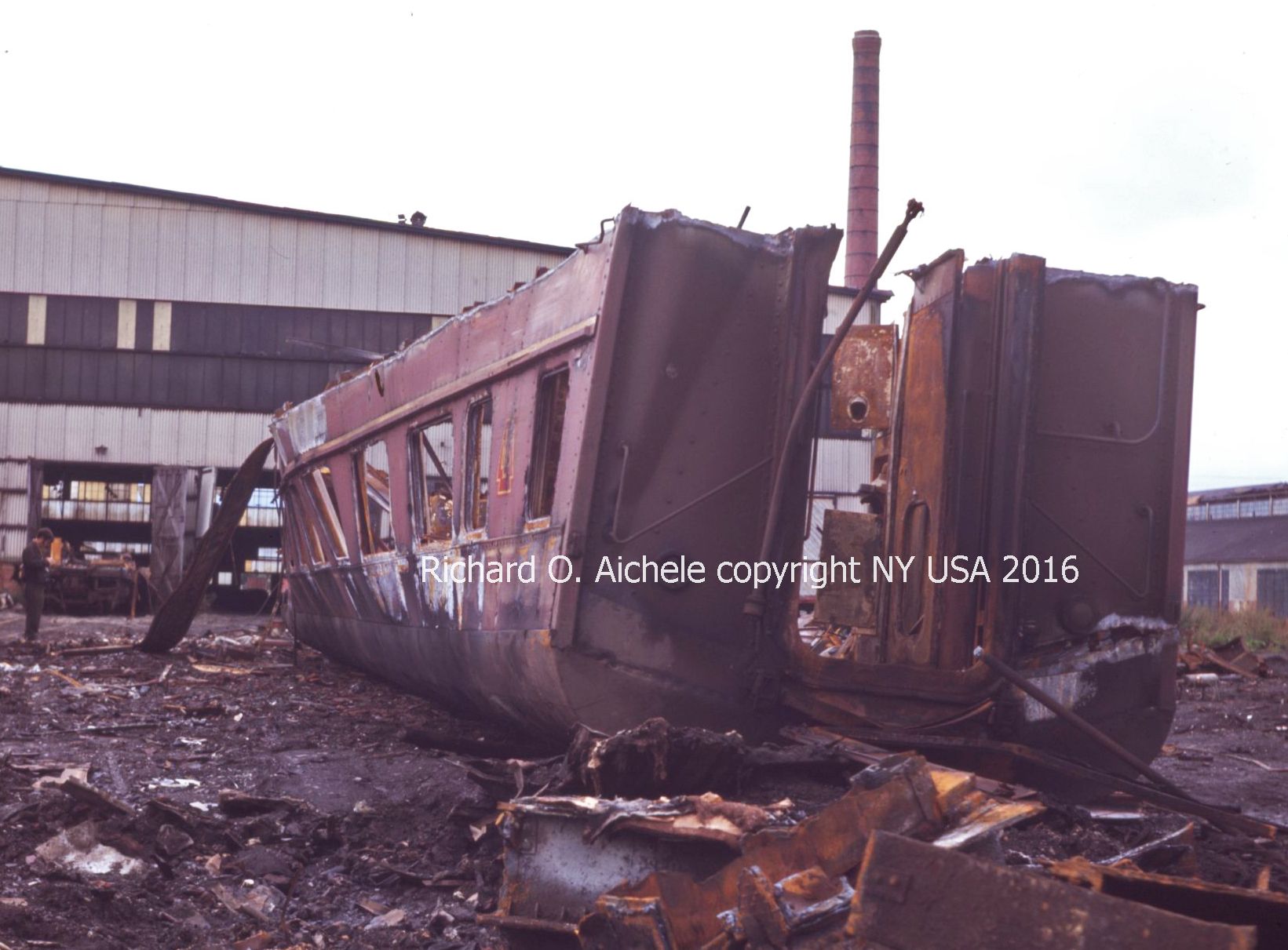 |
Steam Power Still Survives Steam railroad locomotives still survive in the U.S. and Europe for the enjoyment of railroad and steam power enthusiasts and to preserve those important technologies. Two examples are: |
Cog Railway Still Climbs Mount Washington
|
Regional Railroad Memories |
Rocky Mountain Railroading
The Olympian shown climbing the Rocky Mountains on the mainline of the Chicago, Milwaukee and St. Paul Railway.
|
Memories -- Steam Powered Excursions |
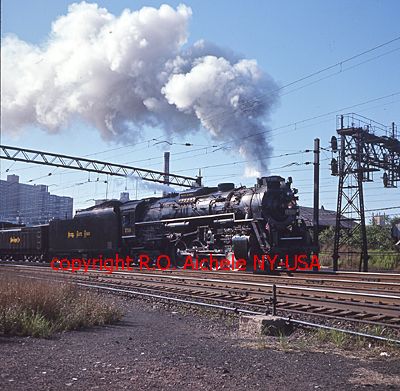 Looking back, in the Northeast, one of the most famous individual operators was the High Iron Company that operated many steam excursions using several locomotives. In this photo, the rebuilt, classic ex-Nickel Plate Railroad's Berkshire 759, powered one of the High Iron Company's finest two day trips that orginated on Day 1 in May 1970 in Hoboken, New Jersey. The train's northwest route followed the old Erie Railroad's mainline through the Catskill Mountains of New York State and then along the upper Delaware River to Binghamton, New York. The Day 2 leg, took the long train south to Scranton, Pennsylvania then east across the old Lackawanna Railroad's mainline through the Delaware Water Gap, across northern New Jersey using the Lackawanna Cut-Off's elevated roadbed at speeds up to 70 MPH for an afternoon arrival at the Lackawanna Railroad's Hoboken Terminal. Looking back, in the Northeast, one of the most famous individual operators was the High Iron Company that operated many steam excursions using several locomotives. In this photo, the rebuilt, classic ex-Nickel Plate Railroad's Berkshire 759, powered one of the High Iron Company's finest two day trips that orginated on Day 1 in May 1970 in Hoboken, New Jersey. The train's northwest route followed the old Erie Railroad's mainline through the Catskill Mountains of New York State and then along the upper Delaware River to Binghamton, New York. The Day 2 leg, took the long train south to Scranton, Pennsylvania then east across the old Lackawanna Railroad's mainline through the Delaware Water Gap, across northern New Jersey using the Lackawanna Cut-Off's elevated roadbed at speeds up to 70 MPH for an afternoon arrival at the Lackawanna Railroad's Hoboken Terminal. |
Railroads Moved Thousands by Water Every Day |
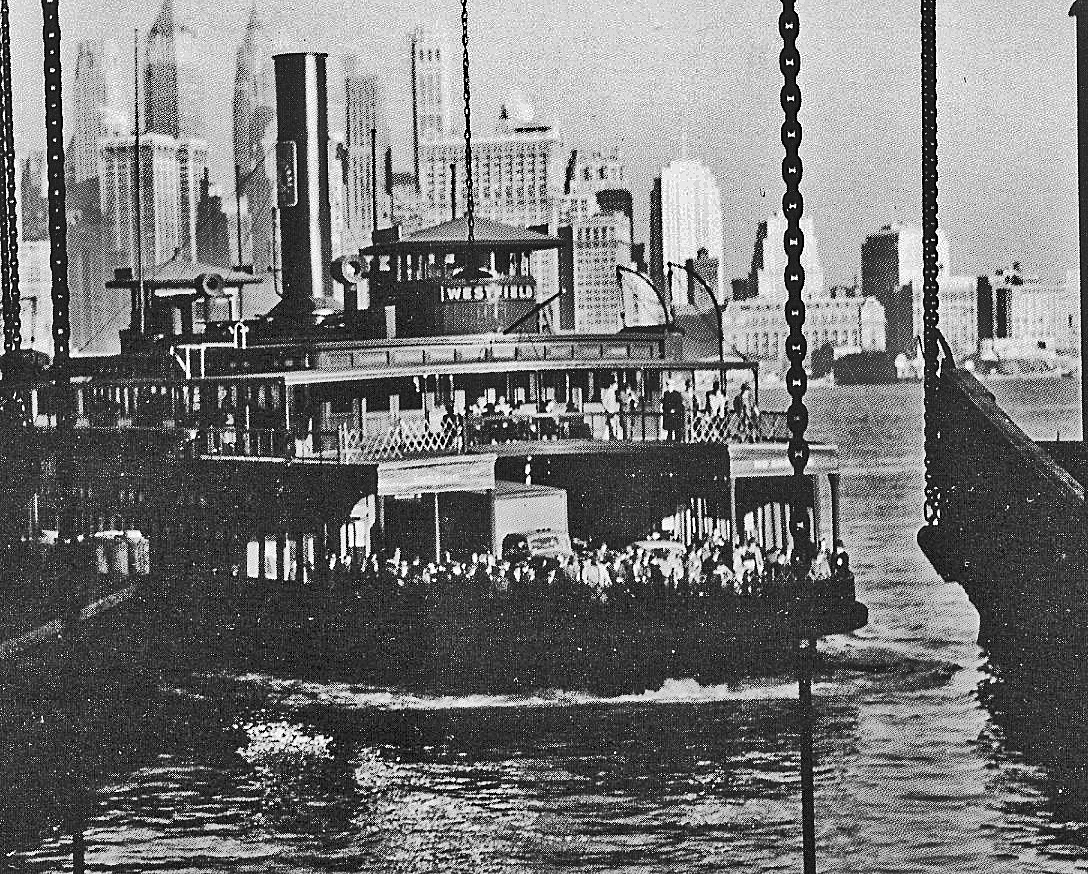 Steam powered the railroad ferries - tug boats - and their connecting inland steamboats were once very important parts of railroad history. The ferries serving San Francisco were long popular. Cross Hudson River ferries operated by the Lackawanna, New York Central, Erie and Pennsylvania railroads plus the municipal ferries across lower New York harbor were the areas transportation core and their survivors are still an important link today. Steam powered the railroad ferries - tug boats - and their connecting inland steamboats were once very important parts of railroad history. The ferries serving San Francisco were long popular. Cross Hudson River ferries operated by the Lackawanna, New York Central, Erie and Pennsylvania railroads plus the municipal ferries across lower New York harbor were the areas transportation core and their survivors are still an important link today. |
Information Works Inc. Transportation - Ships - Trains - Infrastructure Steamboats on America's Rivers and Lakes High Speed Rail - Very Fast and Comfortable The First New York City Railroad Tunnels Under the Hudson River Click to return to -INFORWORKS.COM -homepage Article Copyright 2020. All rights reserved by Richard O. Aichele and InforWorks.com, Saratoga Springs, NY 12866 USA
. . . . . . . |
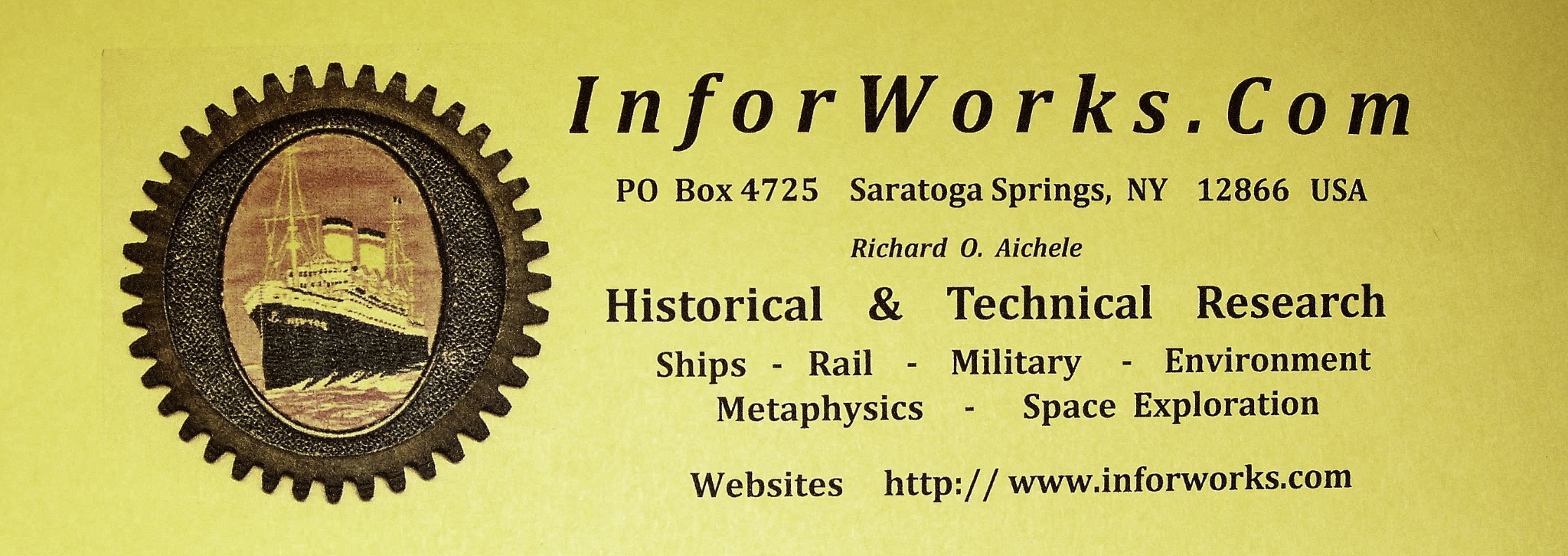
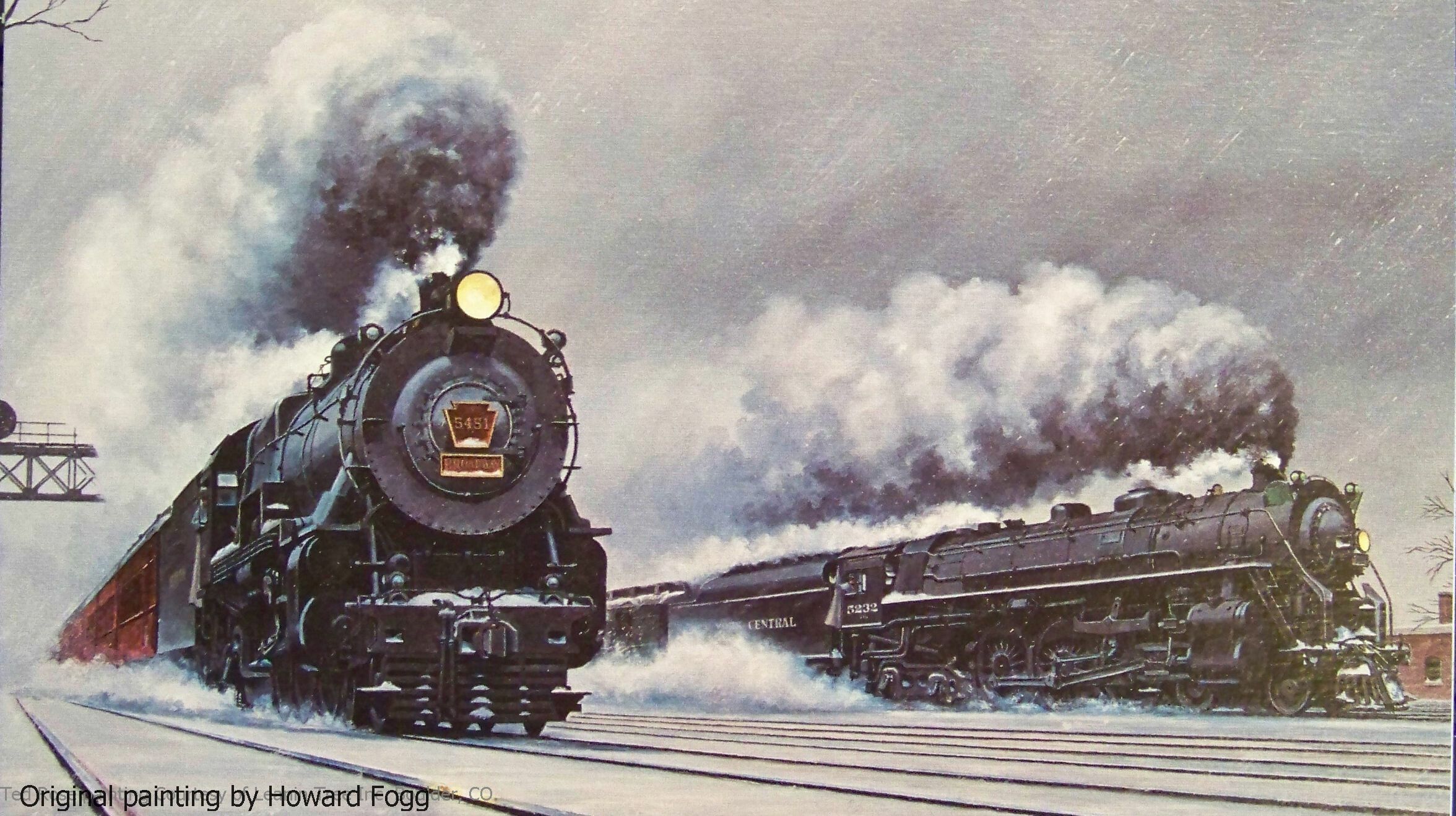
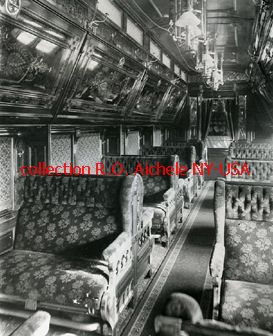 The Pullman Company's Upper Berths, Lower Berths and Drawing Rooms set the standard for comfortable, safe travel up until the late 1950s.
The Pullman Company's Upper Berths, Lower Berths and Drawing Rooms set the standard for comfortable, safe travel up until the late 1950s.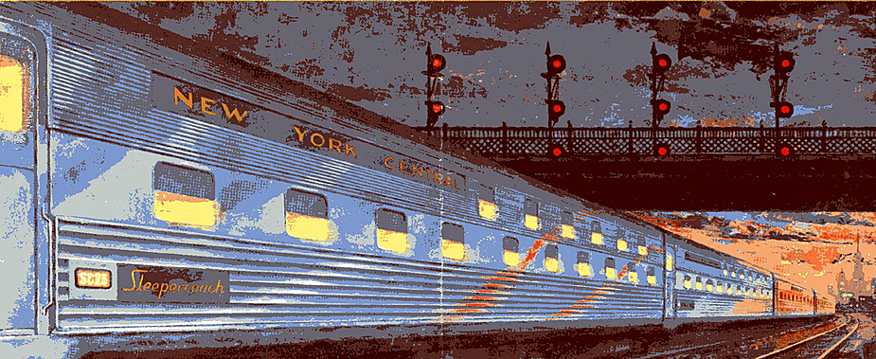 By the mid-1950s, the Pullman Company had become a part of railroad history but many of their sleeping cars, the on-board traditions, standards and service survived but were operated by the railroads. Newer railroad cars were of the lightweight streamlined sleeping cars also included the Sleepercoaches such as this car on the New York Central Railroad provided the most economical sleeping car roomettes and bedrooms with private facilities.
By the mid-1950s, the Pullman Company had become a part of railroad history but many of their sleeping cars, the on-board traditions, standards and service survived but were operated by the railroads. Newer railroad cars were of the lightweight streamlined sleeping cars also included the Sleepercoaches such as this car on the New York Central Railroad provided the most economical sleeping car roomettes and bedrooms with private facilities.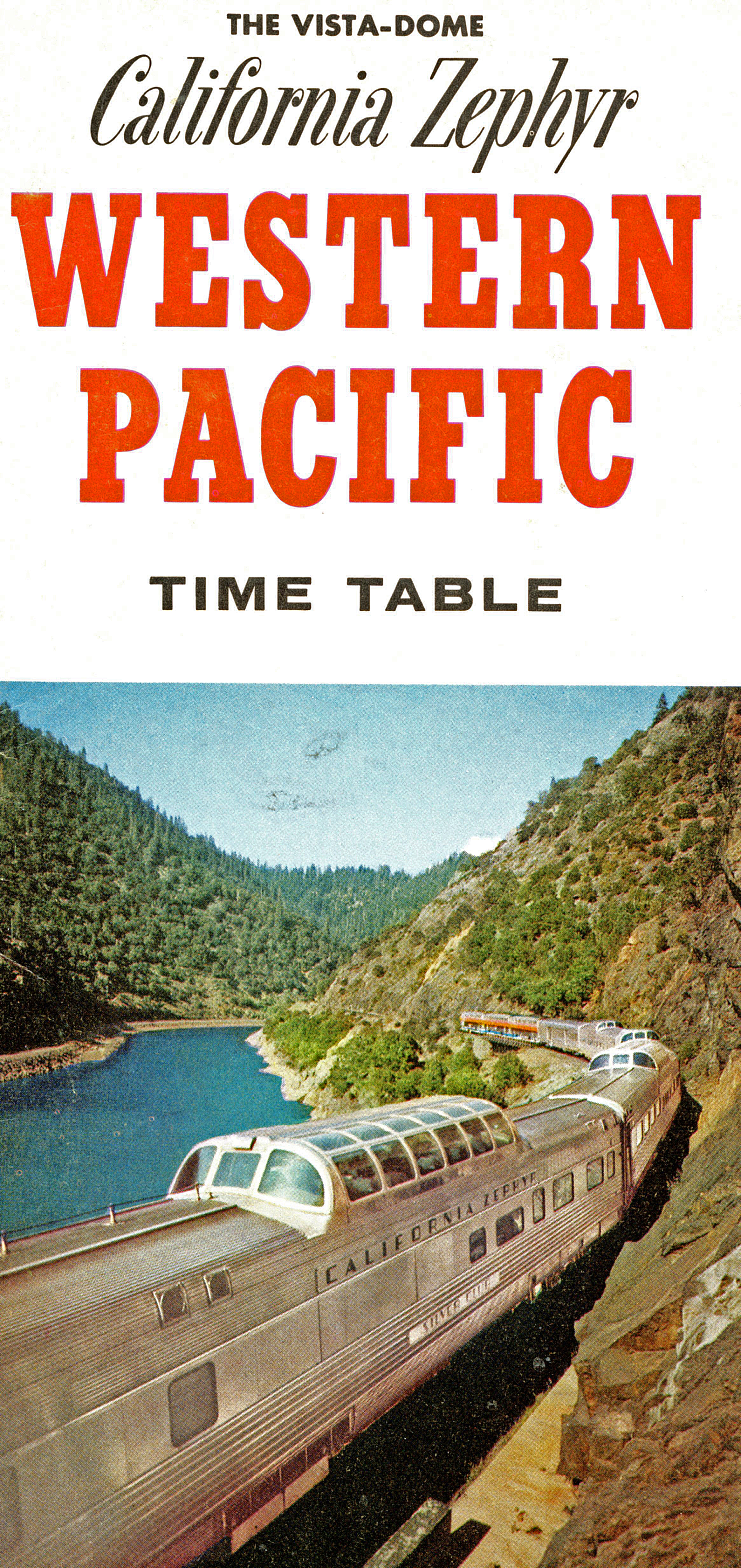 Dome cars were introduced on America's western trains in the early 1950s. Upstairs in the dome passengers enjoyed great views. Below, they could enjoy "The intimate cocktail bar beneath the California Zephyr's Observation Car's Vista-Dome that is a favorite place with Pullman passengers for before dinner cocktails and nightcaps. Lighting is subdued and service is quietly efficient," according to the Western Pacific Railroad. Also provided was the "Cable Car Room buffet lounge serving light meals and beverages from morning 'till evening." Similar services were also the standard on the other cross country railroads including the Santa Fe Railroad's Super Chief, the Burlington Northern's Empire Builder, and the Northern Pacific's North Coast Limited.
Dome cars were introduced on America's western trains in the early 1950s. Upstairs in the dome passengers enjoyed great views. Below, they could enjoy "The intimate cocktail bar beneath the California Zephyr's Observation Car's Vista-Dome that is a favorite place with Pullman passengers for before dinner cocktails and nightcaps. Lighting is subdued and service is quietly efficient," according to the Western Pacific Railroad. Also provided was the "Cable Car Room buffet lounge serving light meals and beverages from morning 'till evening." Similar services were also the standard on the other cross country railroads including the Santa Fe Railroad's Super Chief, the Burlington Northern's Empire Builder, and the Northern Pacific's North Coast Limited. 
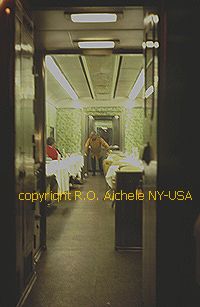 Maintaining first class and coach transcontinental service was an early priority. Amtrak's The National Limited ran between New York City via Pittsburgh to St. Louis and then onto Kansas City. At Kansas City, one of the Amtrak sleeping cars was uncoupled and held in the station for several hours and then attached to the westbound consist of the Super Chief enroute to Los Angeles, California. No need to change cars for a cross country trip. The photo taken in December, 1971 shows the crew of the ex-Penn Central dining car relax after serving the last of the diners before arrival in St. Louis.
Maintaining first class and coach transcontinental service was an early priority. Amtrak's The National Limited ran between New York City via Pittsburgh to St. Louis and then onto Kansas City. At Kansas City, one of the Amtrak sleeping cars was uncoupled and held in the station for several hours and then attached to the westbound consist of the Super Chief enroute to Los Angeles, California. No need to change cars for a cross country trip. The photo taken in December, 1971 shows the crew of the ex-Penn Central dining car relax after serving the last of the diners before arrival in St. Louis.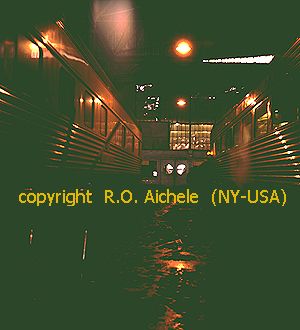 Once one of the finest classic rail stations in the nation, St. Louis' Union Station had fallen on hard times by December, 1971 when cars of Amtrak's National Limited occupied adjacent tracks amid mud from water coming through the deteriorated train shed roof and years of general grime.
Once one of the finest classic rail stations in the nation, St. Louis' Union Station had fallen on hard times by December, 1971 when cars of Amtrak's National Limited occupied adjacent tracks amid mud from water coming through the deteriorated train shed roof and years of general grime.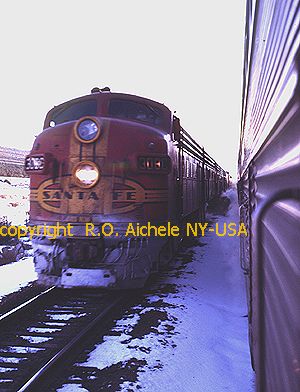 The Santa Fe Railroad's locomotives with their distinctive traditonal War Bonnet design and colors still powered Amtrak's eastbound and westbound Super Chief / El Capitan trains in the early 1970s shown here meeting high in the New Mexico mountains near Raton Pass.
The Santa Fe Railroad's locomotives with their distinctive traditonal War Bonnet design and colors still powered Amtrak's eastbound and westbound Super Chief / El Capitan trains in the early 1970s shown here meeting high in the New Mexico mountains near Raton Pass. 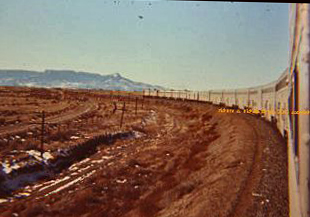
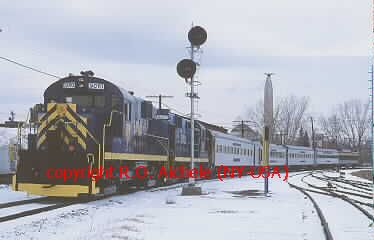 Northbound, the guests boarded the private train in Grand Central Terminal, New York City at 5:00 PM. They enjoyed cocktails and dinner in the train's diner enroute along the scenic Hudson River. Guests retired to their compartments and slept as the private train travelled north over the Delaware & Hudson mainline to Plattsburgh, New York. After breakfast in the diner, they boarded the motor coach for the trip to Lake Placid. For the 1980 Winter Olympic Special Train's southbound trip, guests from Lake Placid boarded the train for a late morning daytime run departing from Plattsburgh enroute to Grand Central Terminal in New York City.
Northbound, the guests boarded the private train in Grand Central Terminal, New York City at 5:00 PM. They enjoyed cocktails and dinner in the train's diner enroute along the scenic Hudson River. Guests retired to their compartments and slept as the private train travelled north over the Delaware & Hudson mainline to Plattsburgh, New York. After breakfast in the diner, they boarded the motor coach for the trip to Lake Placid. For the 1980 Winter Olympic Special Train's southbound trip, guests from Lake Placid boarded the train for a late morning daytime run departing from Plattsburgh enroute to Grand Central Terminal in New York City.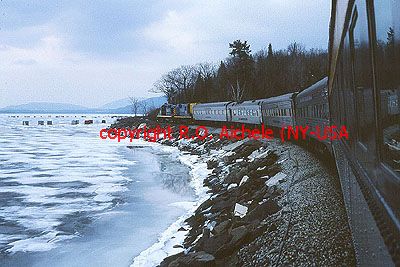 Photo taken south of Plattsburgh trip on the Delaware & Hudson Railway's mainline hugging the western shore of Lake Champlain, New York with the Virginia Beach as the fourth car behind the Delaware & Hudson's diesel locomotives 5001 and 5002.
Photo taken south of Plattsburgh trip on the Delaware & Hudson Railway's mainline hugging the western shore of Lake Champlain, New York with the Virginia Beach as the fourth car behind the Delaware & Hudson's diesel locomotives 5001 and 5002.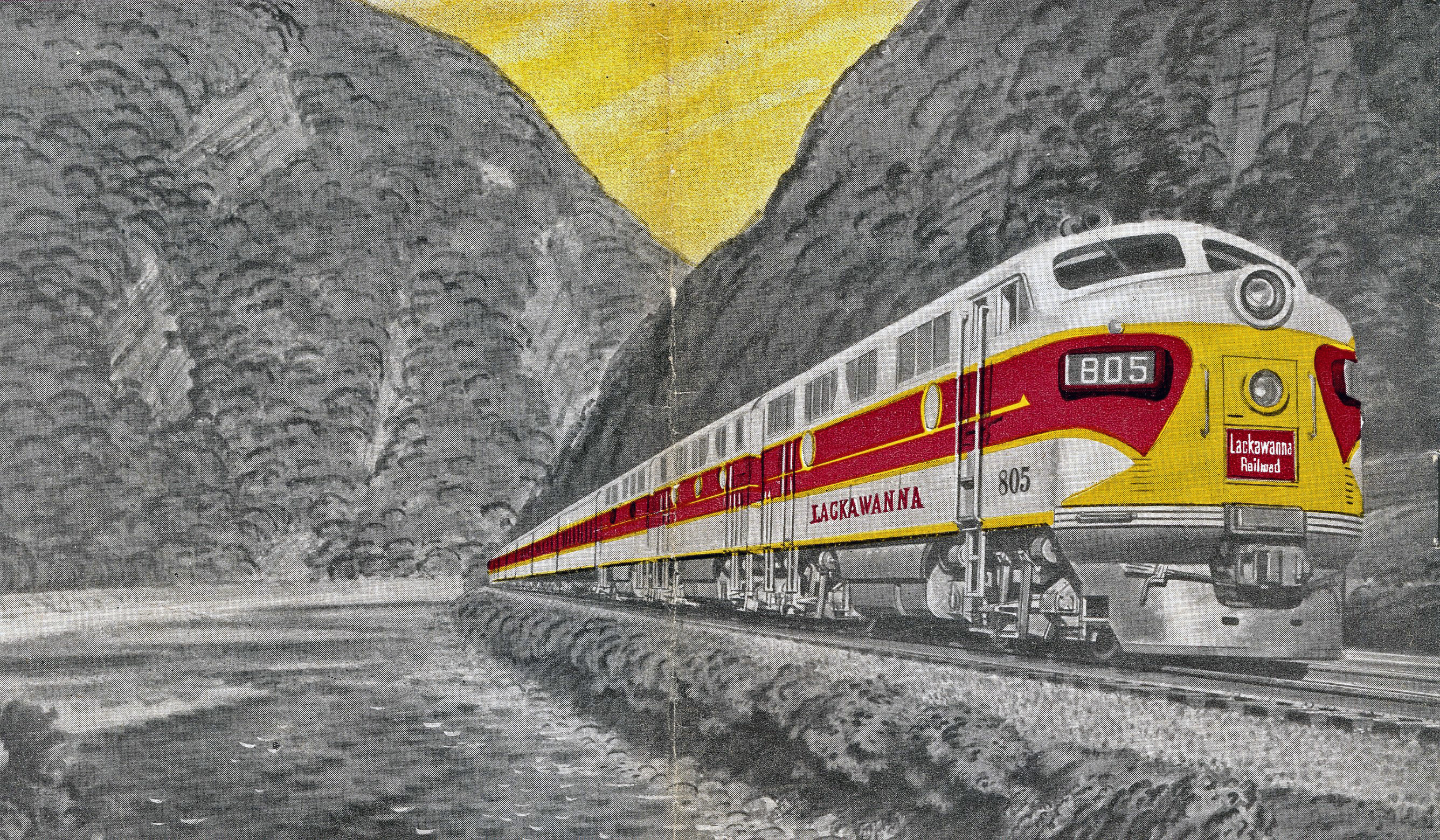
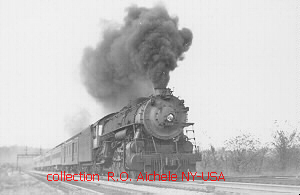 ( Left ) With passengers from the west, the Delaware, Lackawanna & Western Railroad passenger train New York Express headed by locomotive #1404 (a 4-8-2) races eastward towards Clarks Summit, PA. Making up the consist was a sleeping car, parlor car, dining car and coaches. Originating in Buffalo, NY, the train arrived at the Lackawanna Terminal in Hoboken, NJ in mid-afternoon.
( Left ) With passengers from the west, the Delaware, Lackawanna & Western Railroad passenger train New York Express headed by locomotive #1404 (a 4-8-2) races eastward towards Clarks Summit, PA. Making up the consist was a sleeping car, parlor car, dining car and coaches. Originating in Buffalo, NY, the train arrived at the Lackawanna Terminal in Hoboken, NJ in mid-afternoon. 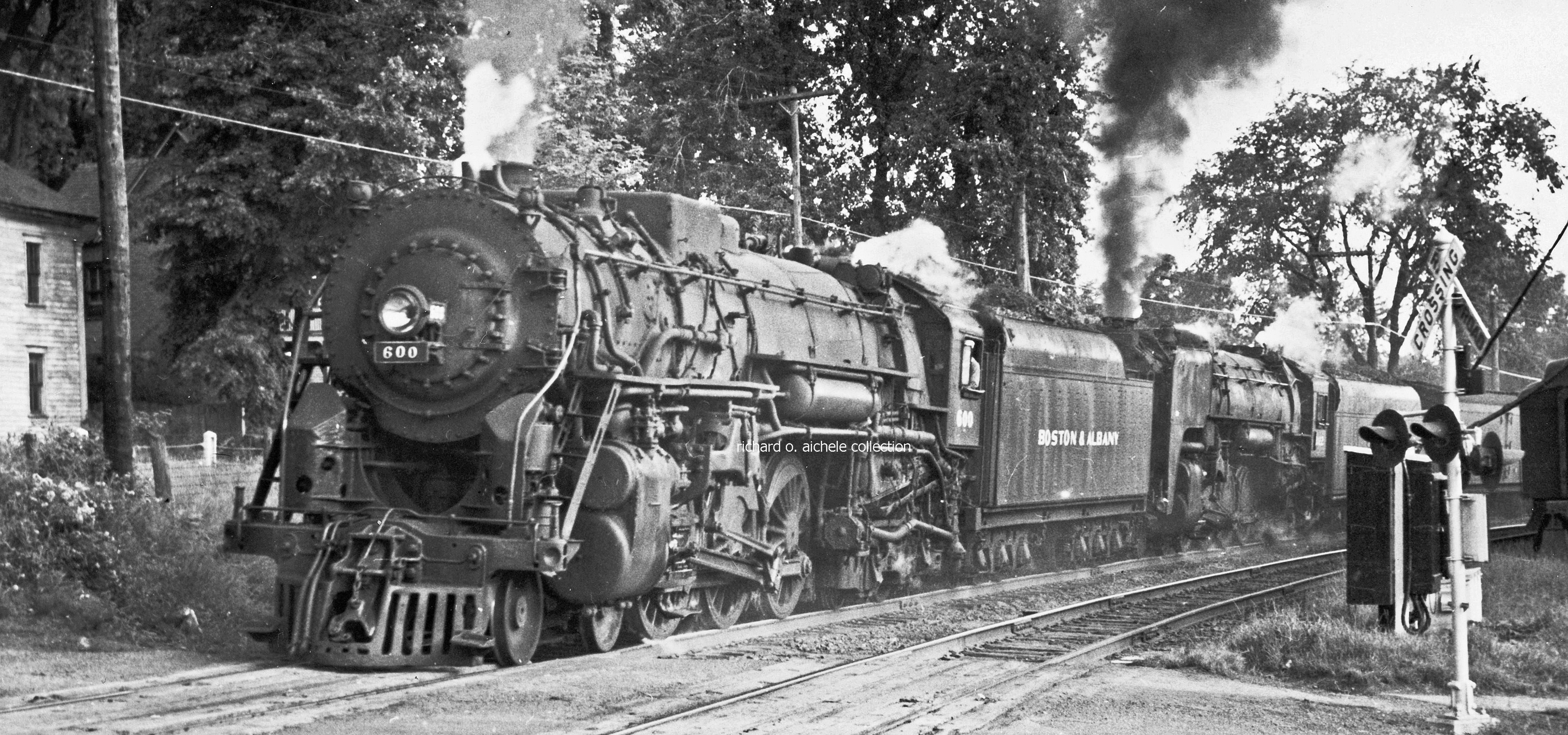
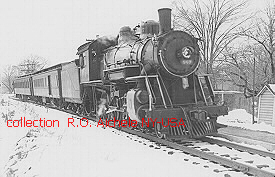 ( Right > ) The Erie Railroad was one of the oldest of the eastern railroads and
had its eastern terminal on New Jersey's Hudson River shoreline in Jersey City.
But from the New Jersey waterfront to the mid-west, scenes such as this Erie
local train serving the smaller cities and towns were common.
( Right > ) The Erie Railroad was one of the oldest of the eastern railroads and
had its eastern terminal on New Jersey's Hudson River shoreline in Jersey City.
But from the New Jersey waterfront to the mid-west, scenes such as this Erie
local train serving the smaller cities and towns were common. 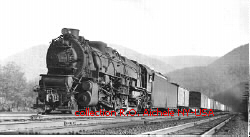 ( Left) Along the mainline route of the Pennsylvania Railroad,
locomotive 6769, a 4-8-2, hauls a westbound merchandise freight along the
Juniata River toward Lewistown, Pennsylvania. It was also the route of the PRR's
famous passenger train fleet including the all first class Broadway
Limited operating overnight between New York City and Chicago.
( Left) Along the mainline route of the Pennsylvania Railroad,
locomotive 6769, a 4-8-2, hauls a westbound merchandise freight along the
Juniata River toward Lewistown, Pennsylvania. It was also the route of the PRR's
famous passenger train fleet including the all first class Broadway
Limited operating overnight between New York City and Chicago.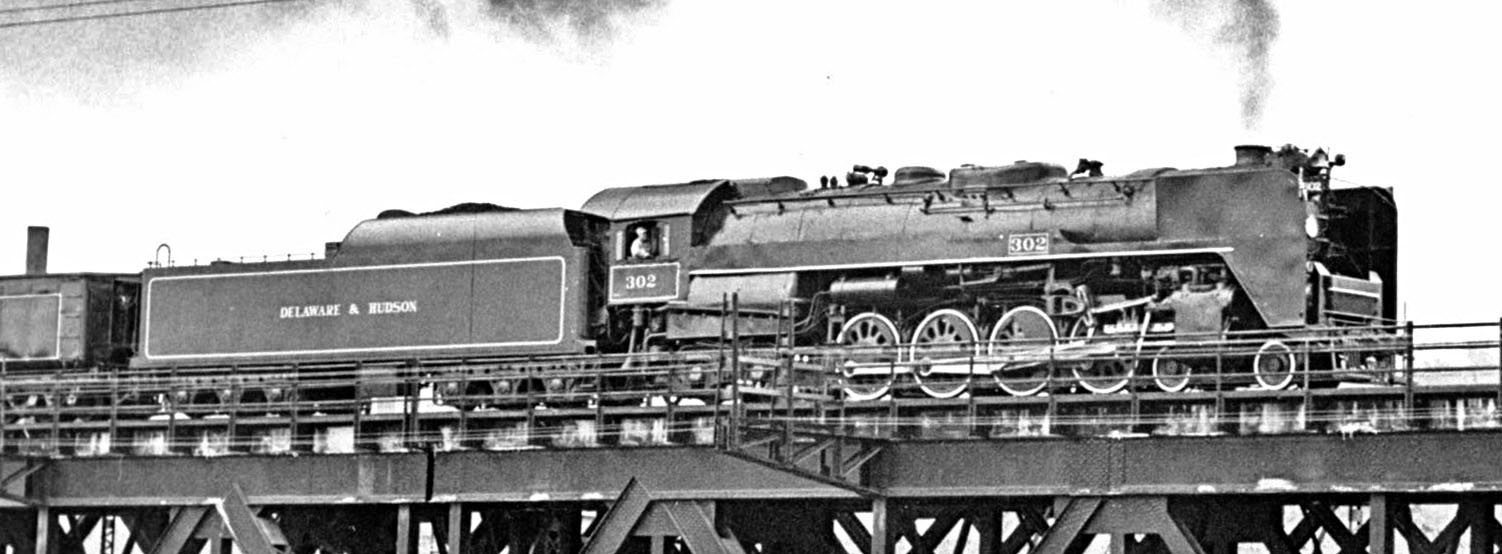 Technically the engines had the latest steam superpower equipment and 75-inch drivers. Aesthetically the D&H exterior design presented a clean smooth appearance of the engines with their elephant ears for smoke control and the tenders. The Class K was built for the dual purposes of power to handle heavy freight trains and speed for pulling the Montreal Limited and the Laurentian passenger trains with their Pullman sleepers. Fifteen Class K locomotives were built in 1943 but growth of the diesels cut their lives short and the D&H Class K's were scrapped in 1952 and 1953.
Technically the engines had the latest steam superpower equipment and 75-inch drivers. Aesthetically the D&H exterior design presented a clean smooth appearance of the engines with their elephant ears for smoke control and the tenders. The Class K was built for the dual purposes of power to handle heavy freight trains and speed for pulling the Montreal Limited and the Laurentian passenger trains with their Pullman sleepers. Fifteen Class K locomotives were built in 1943 but growth of the diesels cut their lives short and the D&H Class K's were scrapped in 1952 and 1953. 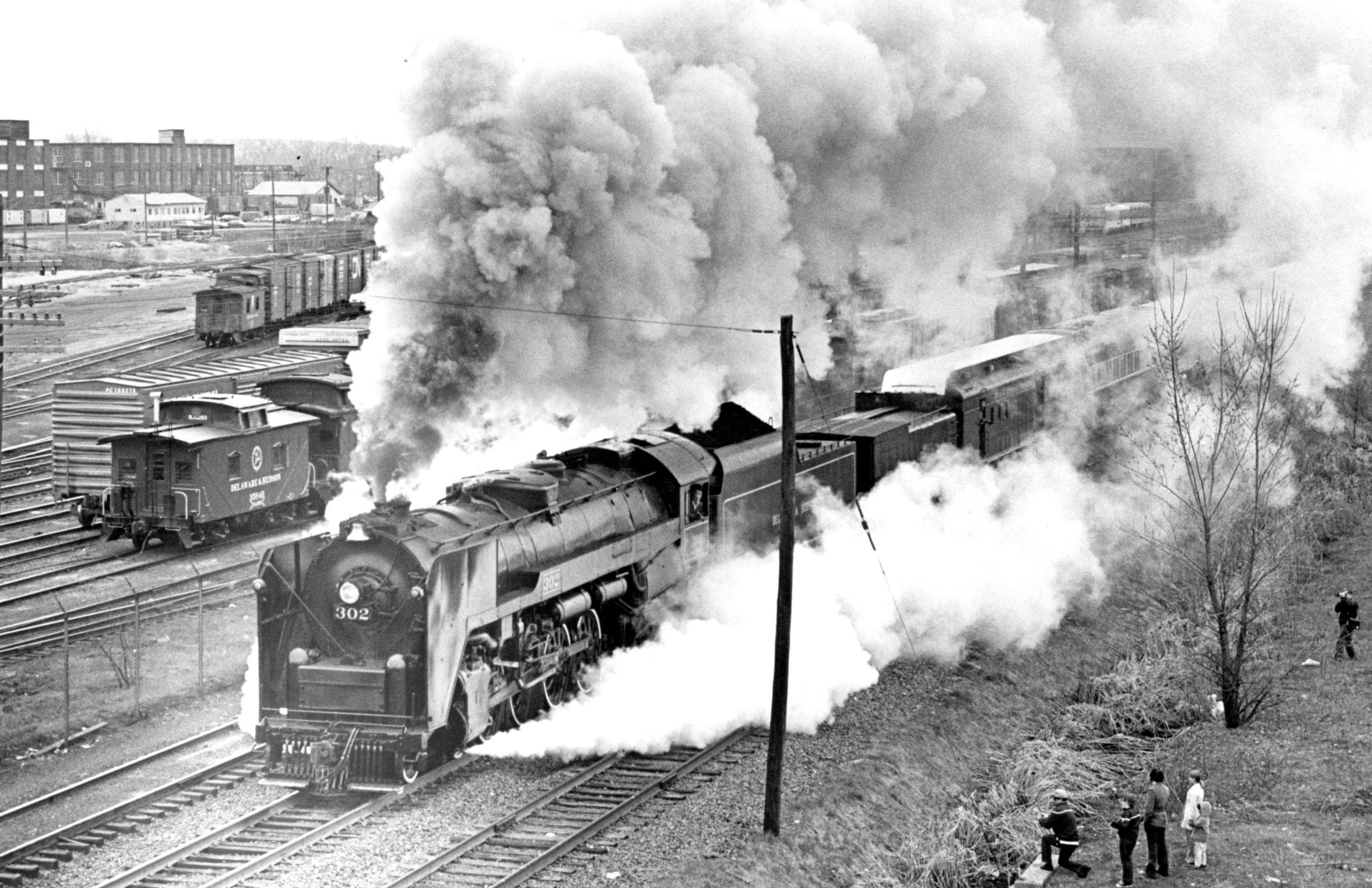
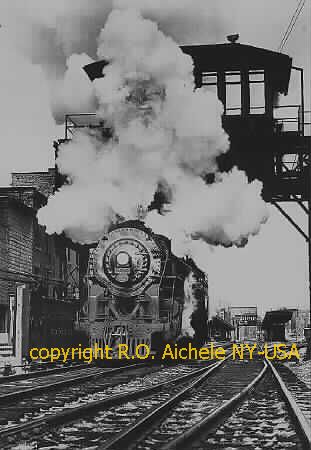
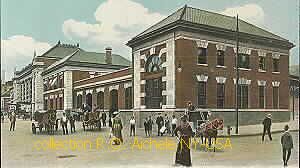
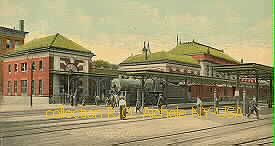
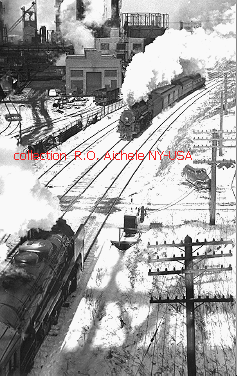 A southbound New York Central passenger train out of Troy Union Station and a northbound New York Central Railroad passenger local train met near Troy's heavy industry area that included steel mills and petroleum storage tank farms in the late 1940s or early 1950s. All Troy, NY steam locomotive photos by Gene Baxter.
A southbound New York Central passenger train out of Troy Union Station and a northbound New York Central Railroad passenger local train met near Troy's heavy industry area that included steel mills and petroleum storage tank farms in the late 1940s or early 1950s. All Troy, NY steam locomotive photos by Gene Baxter.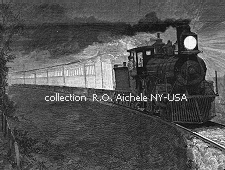 The northbound train left New York at 3 PM, traveled over the New York and New Haven and New York and New England lines, with a scheduled arrival in Boston at 9 PM. An identical southbound train set left Boston at 3 PM and arrived in New York at 9 PM. Speed was not important at that time for these overnight trains. With all stops they averaged only 38 miles and hour over the 227 mile route. What made these trains popular was the comfort and service provided on board combined with the constant regularity of arriving at stations on time.
The northbound train left New York at 3 PM, traveled over the New York and New Haven and New York and New England lines, with a scheduled arrival in Boston at 9 PM. An identical southbound train set left Boston at 3 PM and arrived in New York at 9 PM. Speed was not important at that time for these overnight trains. With all stops they averaged only 38 miles and hour over the 227 mile route. What made these trains popular was the comfort and service provided on board combined with the constant regularity of arriving at stations on time.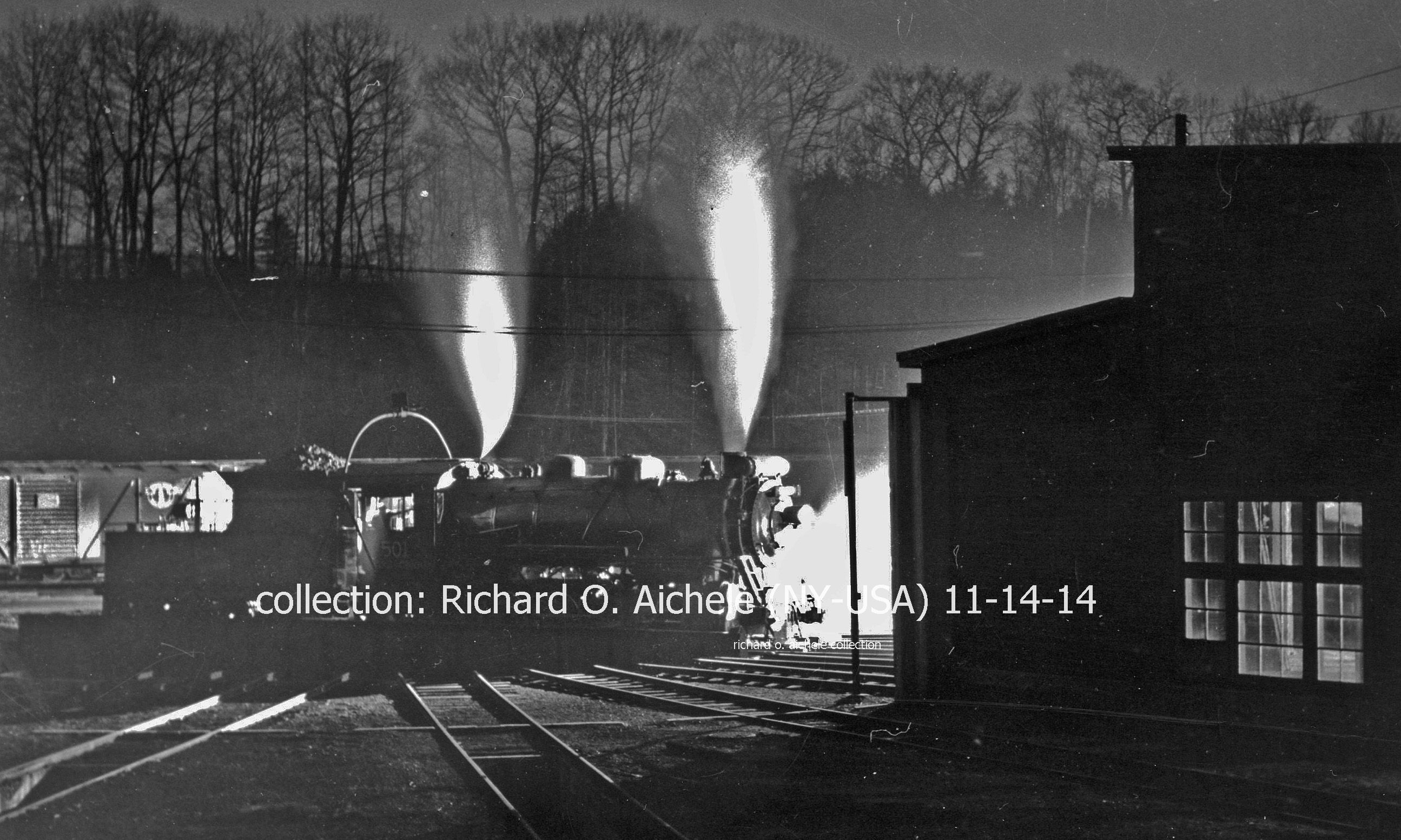 At the heart of railroad steam locomotive operations up until the 1950s was the railroad roundhouse with its turntable to orient steam locomotives into the individual "stalls" or work bays. In Troy, New York, the seven stall roundhouse was built by the Boston and Maine Railroad. It was located at 8th Street and Middleburgh Street north of the Troy Union Station. The structure still survives today as an industrial building.
At the heart of railroad steam locomotive operations up until the 1950s was the railroad roundhouse with its turntable to orient steam locomotives into the individual "stalls" or work bays. In Troy, New York, the seven stall roundhouse was built by the Boston and Maine Railroad. It was located at 8th Street and Middleburgh Street north of the Troy Union Station. The structure still survives today as an industrial building.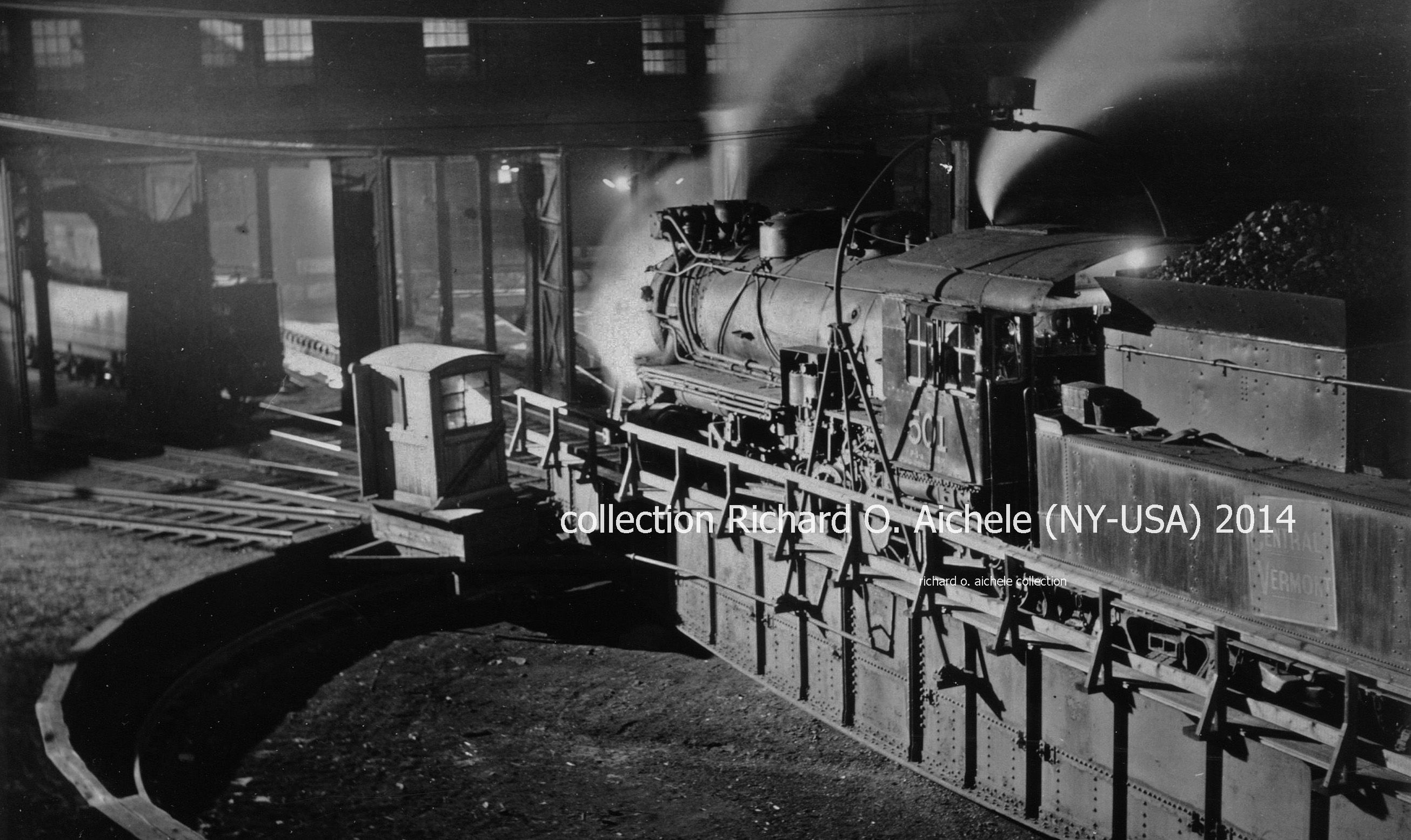
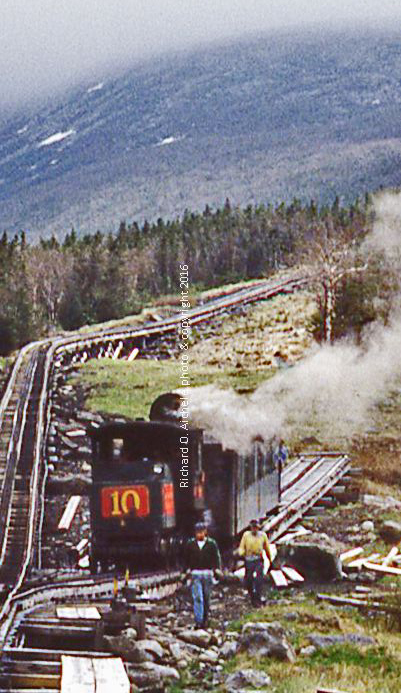 The Cog Railway travelling up to the 6,288 ft. high peak of Mount Washington, New Hampshire USA is a most enjoyable rail journey. The railway's rack and pinion locomotives first went into operation in 1869 on the approximately three mile line that has an average grade of 25 percent with a maximum grade of 37.4 percent at points. The original construction that made it the world's first mountain climbing cog railway set the stage for innovation and inventiveness that has ensured continuous operationThe Cog Railway continues to be a leader in cutting edge technology."
The Cog Railway travelling up to the 6,288 ft. high peak of Mount Washington, New Hampshire USA is a most enjoyable rail journey. The railway's rack and pinion locomotives first went into operation in 1869 on the approximately three mile line that has an average grade of 25 percent with a maximum grade of 37.4 percent at points. The original construction that made it the world's first mountain climbing cog railway set the stage for innovation and inventiveness that has ensured continuous operationThe Cog Railway continues to be a leader in cutting edge technology." 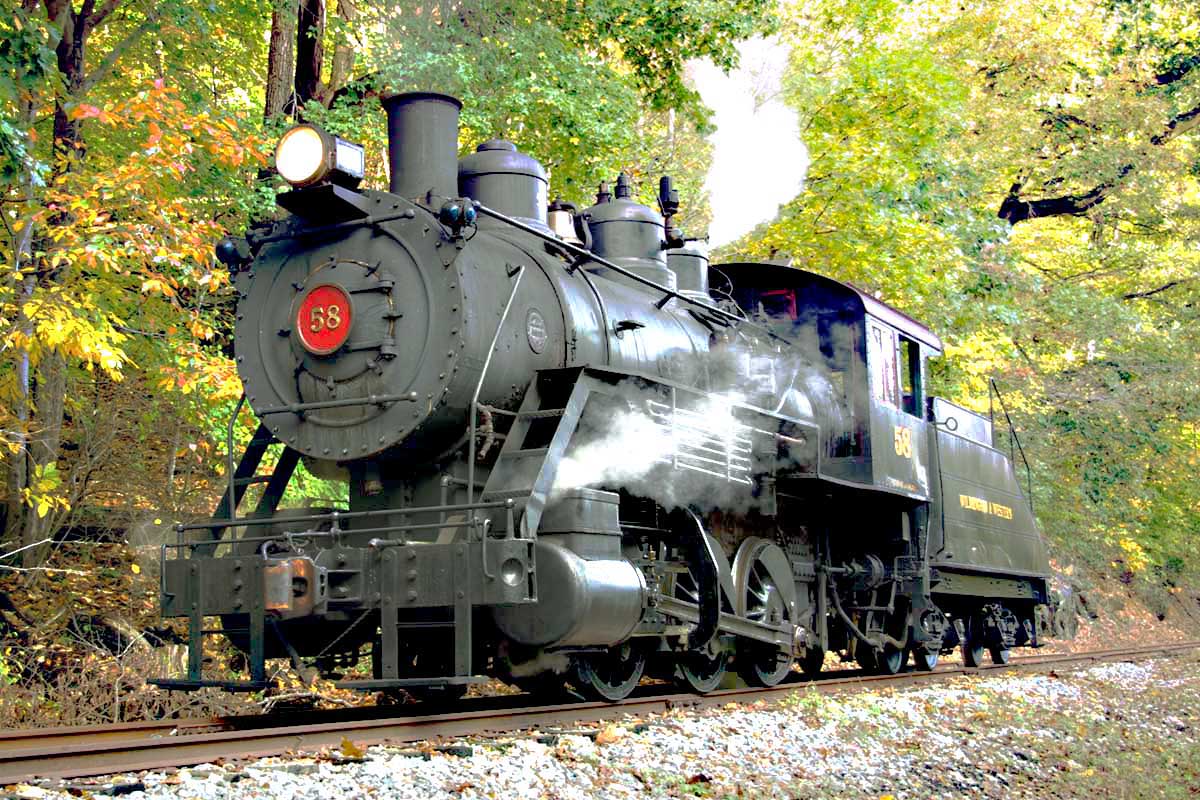 Wilmington & Western Railroad, Wilmington, Delaware.
Wilmington & Western Railroad, Wilmington, Delaware.
 The railroads opened the nation. As difficult and dangerous as it was to build across and through the Rocky Mountains, for those that could travel the routes it provided spectacular scenery. Many miles of the mountain railroads were built to narrow gauge standards. This 1929 photo of the Royal Gorge Route shows a Denver, Rio Grande & Western RR passenger train that had traveled hundred of miles through gorges and over mountains, stopping at the Hanging Bridge. At this point, the Royal Gorge is a half mile deep yet only forty feet wide at the bottom, a quarter mile wide at the top.
The railroads opened the nation. As difficult and dangerous as it was to build across and through the Rocky Mountains, for those that could travel the routes it provided spectacular scenery. Many miles of the mountain railroads were built to narrow gauge standards. This 1929 photo of the Royal Gorge Route shows a Denver, Rio Grande & Western RR passenger train that had traveled hundred of miles through gorges and over mountains, stopping at the Hanging Bridge. At this point, the Royal Gorge is a half mile deep yet only forty feet wide at the bottom, a quarter mile wide at the top.